Thrane and Thrane A S RTU4120B Iridium fixed mount transceiver User Manual B4150GB0 1
Thrane & Thrane A/S Iridium fixed mount transceiver B4150GB0 1
Contents
- 1. user manual
- 2. technical manual
user manual
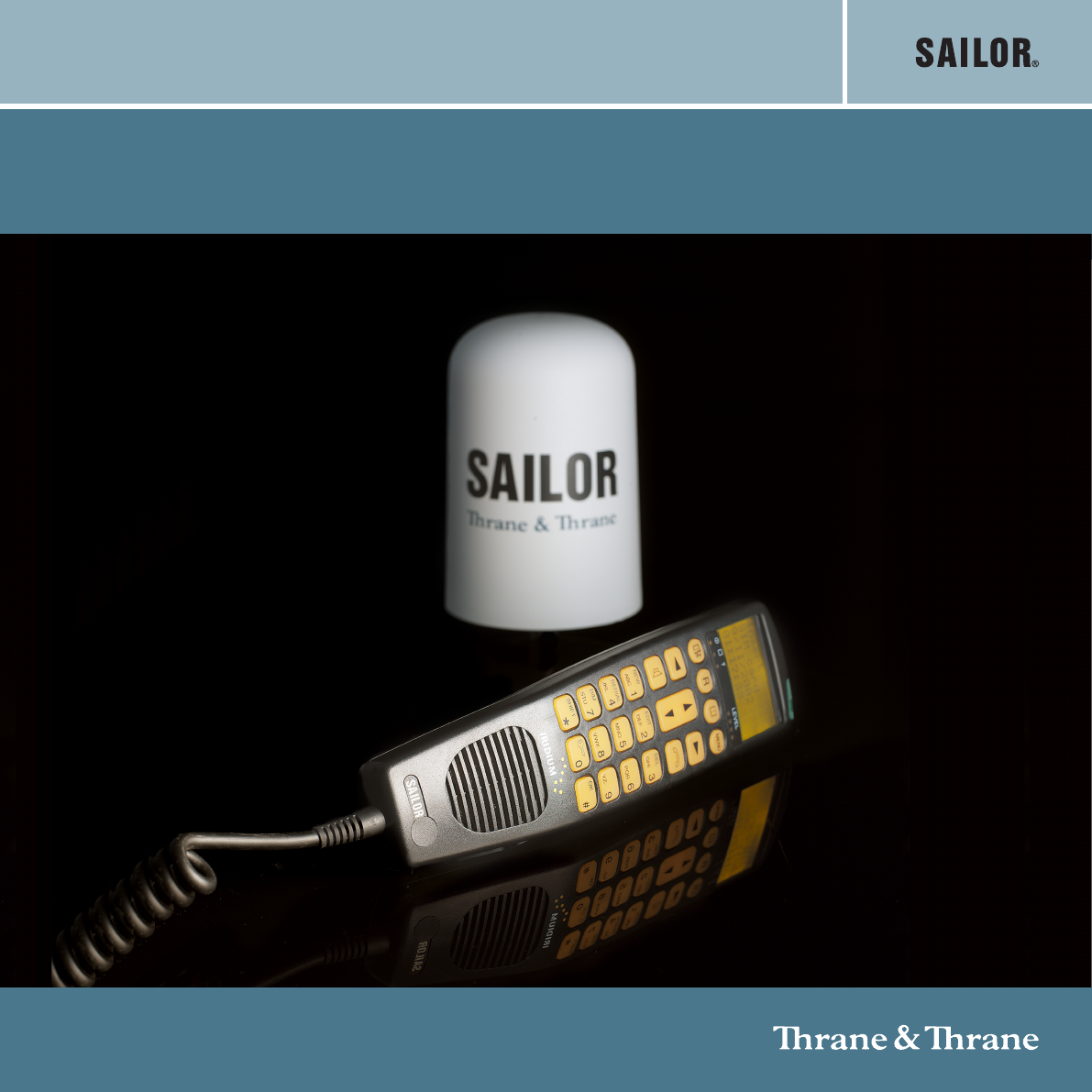
OPERATION MANUAL
SAILOR SC4000 IRIDIUM
ii
0125
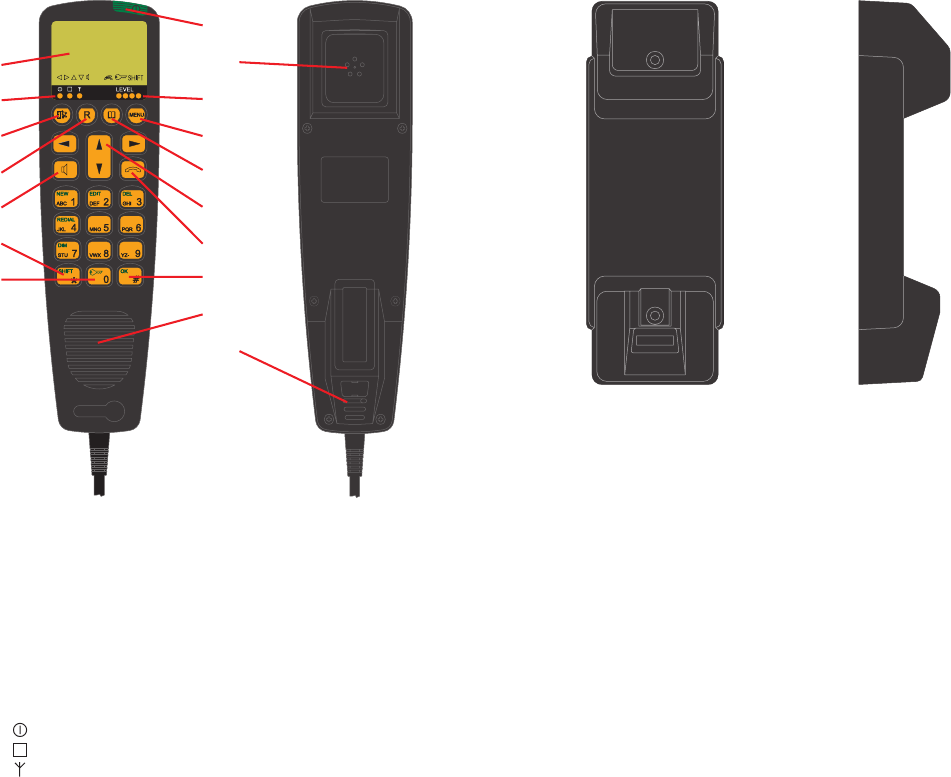
iii
Handset
What Is What?
1. Display
2. Indicator lamps
Power
Call
Network
3. Escape key
4. Call transfer key
5. Loudspeaker on/off key
6. Shift key
7. Lock on/off key
8. On/off button
9. Earpiece
10. Signal level
11. Opens menu
12. Opens phone book
13. Volume control/navigate menu
14. Hook on/off key
15. OK key
16. Loudspeaker
17. Microphone
1
2
3
4
5
6
7
8
9
10
11
12
13
14
15
16
17
0125
Cradle

iv
Introduction
Your Iridium equipment is a modular system that consists of a
transceiver unit, control handset unit, antenna unit and an optional
analogue PSTN telephone/PABX.
You can make and receive voice calls on the control handset and the
analogue PSTN telephone. You can connect up to four handsets
and one analogue PSTN telephone or PBX switchboard to the
system.
The system provides intercom for internal calls between any control
handsets and between the analogue telephone and a control
handset.
Via the data port on the transceiver, the unit can be used as a data
modem for dial-up data calls, Internet access, SMS and E-mail
messaging.
Important!
For FCC RF exposure compliance, the antenna must be
installed with a minimum distance of 0.61m (2 feet) away
from all persons.
About this Manual
This manual provides instructions on how to operate a control
handset, an analogue telephone and on using the transceiver as a
data modem.
The instructions on operating the handset are divided into two parts.
The first part deals with Basic operation, which includes e.g. making
and answering calls. The second part describes the more advanced
functions of the system.
All functions of your Iridium equipment can be operated by following
the step by step procedures described in this manual. Each
procedure is an explicit sequence of key presses that has to be
carried out.
Unless otherwise specified, the description of the individual
procedures has been based on the assumption that the handset is
enabled and is displaying either “Ready” or “Ready Internal” in the
display. This state is through out the manual referred to as ready
state.
We recommend that you read the manual before using the equipment.
Iridium Satellite System
Iridium is a global satellite network for telecommunications. It
consists of 66 satellites providing world-wide coverage.
The Iridium system makes it possible for any two locations on Earth
to establish wireless global telephone contact.
You will need an Iridium subscription with an active Subscriber
Identification Module (SIM card). The SIM card holds your phone
number and the phone number will thus follow the SIM card if used
in another Iridium equipment.
You can buy a subscription from one of the Iridium Service Partners.
The Iridium Service Partners can be found on www.iridium.com .
Different services are available from the service partners, for
example Crew Calling, Pre and Post Paid subscriptions.
Please note
Any responsibility or liability for loss or damage in connection with
the use of this product and the accompanying documentation is
disclaimed. The information in this manual is furnished for informa-
tional use only, is subject to change without notice, may contain
errors or inaccuracies, and represents no commitment whatsoever.
This agreement is governed by the laws of Denmark.
Doc. no.: B4150GB0 Issue: F/0512
This manual covers operation on the following transceiver unit
version:
Software 03.05.00 or higher
Hardware mk3
0445
1
0512
Abbreviations
CU Control unit = handset
GPS Global Positioning System
DTMF Dual Tone Multiple Frequency
LBT L-Band Transceiver
PABX Public Automatic Branch Exchange (also called PBX)
PSTN Public Switched Telephone Network
UTC Universal Time Coordinated (app. the same as Greenwich
Mean Time)
RTU Receiver and Transmitter Unit (also called Transceiver)
Contents
Handset ................................................................................ iii
What Is What? .................................................................................... iii
Introduction ......................................................................... iv
About this Manual .............................................................. iv
Iridium Satellite System ..................................................... iv
Abbreviations ....................................................................... 1
Handset Basic Operation.................................................... 2
Handset States .................................................................................... 2
Handset Enabling/Disabling ................................................................ 2
Pin Code .............................................................................................. 2
Unlocking Handset .............................................................................. 2
Call Functions ...................................................................................... 3
Making a Manual Call.......................................................................... 4
Answering a Call ................................................................................. 5
Call Transfering ................................................................................... 5
Handset Advanced Operation ............................................ 7
Menu System ...................................................................................... 7
Keying in Names and Numbers .......................................................... 7
Phone Book ......................................................................................... 8
Redialling ............................................................................................. 9
Security Lock Function ...................................................................... 10
Password ........................................................................................... 11
Users ................................................................................................. 12
Call Log.............................................................................................. 13
Setting Time and Date ...................................................................... 15
Setting Dimmer and Contrast ........................................................... 15
GPS ................................................................................................... 16
Display ............................................................................................... 16
Billing ................................................................................................. 17
SIM Card Handling ............................................................................ 17
Ringing Tone ..................................................................................... 19
Extension ........................................................................................... 20
Call Answer ....................................................................................... 20
Call Forwarding ................................................................................. 21
Cancel All Forwarding ....................................................................... 21
Call Forward When Unavailable
(Busy + Not Reachable + No Reply/No Answer) ............................. 22
Call Barring ........................................................................................ 22
Call Barring of Incoming Calls .......................................................... 22
Call Barring of Outgoing Calls .......................................................... 23
Voice Mail .......................................................................................... 23
Software Version ............................................................................... 24
Resetting ........................................................................................... 24
Using an Analogue Telephone ......................................... 25
Making a Manual Call........................................................................ 25
Analogue Phone Menu ...................................................................... 26
Billing ................................................................................................. 27
Appendix A ......................................................................... 28
Tone Signalling .................................................................................. 28
Appendix B ......................................................................... 29
Function Menu Overview .................................................................. 29
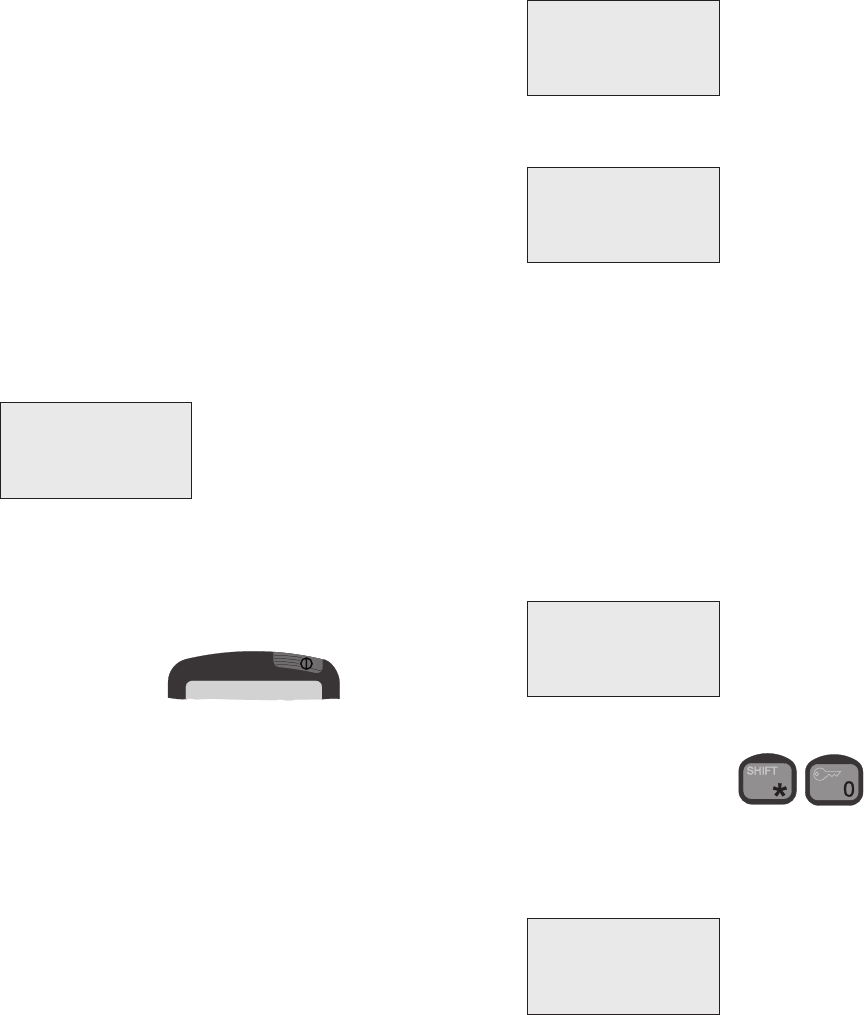
2
Handset Basic Operation
You can connect up to four handsets to this Iridium equipment.
A handset can be in one of two states: enabled or disabled.
Handset States
In each of the two states, the handset’s normal display and signalling
can be described as follows:
Disabled State
• The display is cleared and the light is off.
• The indicator lamp Power is flashing briefly every 5 seconds.
Enabled State
• In the enabled state, various information is shown on the display.
An example:
• The indicator lamp Power is on.
Handset Enabling/Disabling
To enable/disable the handset:
1. Press and hold the on/off button.
2. Wait until you hear the continuous tone signalling or see that the
indicator lamps Power, Call and Network are turned on simultane-
ously.
3. Release the on/off button.
Pin Code
Each time a valid SIM card with an enabled PIN code is inserted,
you are asked to enter your pin code:
Ready
7/9/1999
12:00:49
Enter PIN
7/9/1999
12:00:48
>Captain
Commander
Crew
Officer
Locked
7/9/1999
12:05:06
0512
Key in the pin code supplied with the SIM card. If the pin code keyed
in is correct, the handset enters ready state:
If for some reason the Iridium network is not available at the time,
the display will show “Ready Internal” and you will only be able to
make internal calls between the handsets and the analogue phone.
If you did not key in the correct pin code, you will have to try again. If
you key in a wrong pin code three times in a row, the SIM card will
be blocked and you will have to enter the PUK code to unblock it.
(The PUK code is supplied with the SIM card). See section “SIM
Card Handling” under “Handset Advanced Operation” for further
details.
Unlocking Handset
If the handset is locked, you have to unlock it before it can be used.
To unlock the handset:
1. Press:
The display shows a list of user names. Your user name (I.e. the
current value of the associated priority level) determines which
facilities you have access to. Furthermore, the user name that is
used for unlocking the handset is the name stored in the call log
each time an external call is made.
Ready
01/01/1999
23:59:59
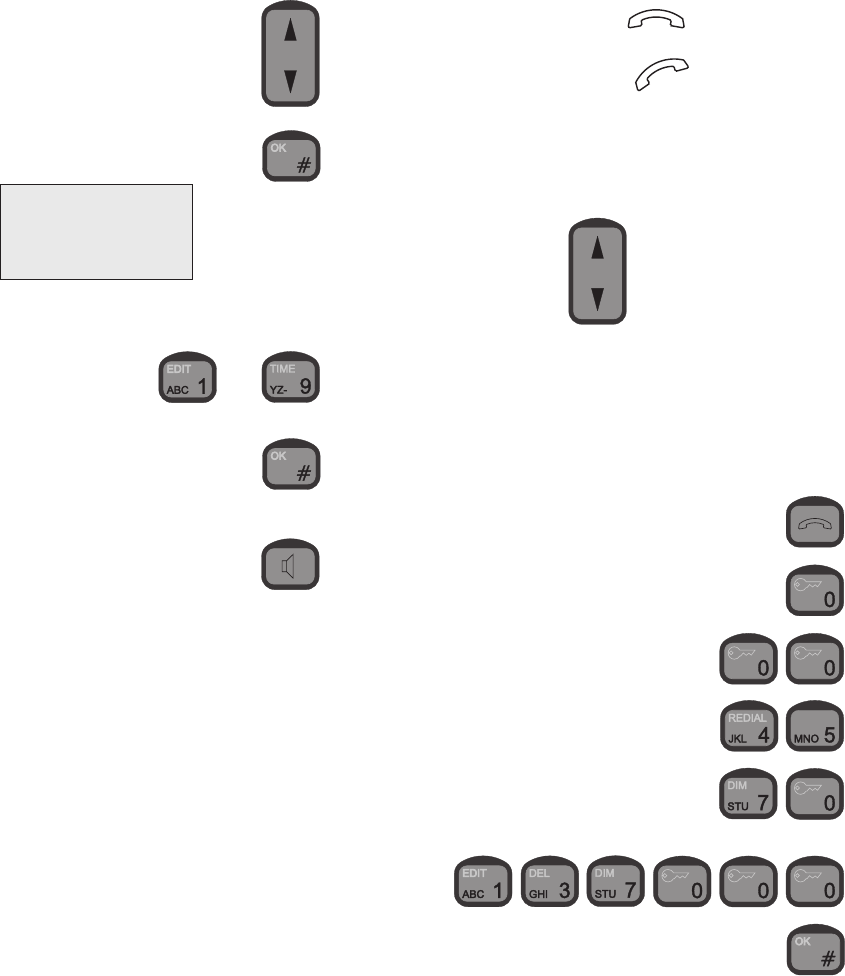
3
2. To find the right user name on the list, eg. Commander,
use:
3. Confirm:
4. Key in the password that corresponds to the selected user
name:
........
5. Confirm:
Call Functions
Speaker, Earpiece and Microphone
The earpiece is always turned on. The speaker and
microphone are always in opposite states, i.e. if the speaker is on,
the microphone is off, and vice versa.
You can toggle the speaker and microphone states by means of the
speaker key. The speaker icon appears on the display when the
speaker is on, and disappears when the microphone is on.
Hands free operation is not possible. You can call or receive a call,
and toggle the speaker on - for listening purposes only.
Note: When the speaker is off, you can see that you are being
called (the display will show “Incoming Call”) - but there will be
no sound in the speaker.
Hooking On/Off
Before a call can be initiated, the handset must be hooked off. To do
so, either remove the handset from the hook or use the on/off-hook
key.
The handset icon on the display indicates three states, depending on
whether the handset has been hooked on or off.
Password for
Commander
_
0512
1. Handset removed from hook,
but hooked on by hook key.
2. Hook off.
3. No icon: Handset placed in hook, and hook on.
Volume
During a conversation, the speaker and earpiece volume can be
adjusted by means of:
How to make an External Call
Entering a telephone number on a handset follows the procedure
shown with this example:
1. Hook off either by removing the handset from the hook
or by pressing the hook key
2. External call 0
3. Prefix for automatic call 0 0
4. Country code, e.g. 4 5
5. Area code, e.g. 7 0
6. Subscriber’s number, e.g. 1 3 7 0 0 0
7. Confirmation #
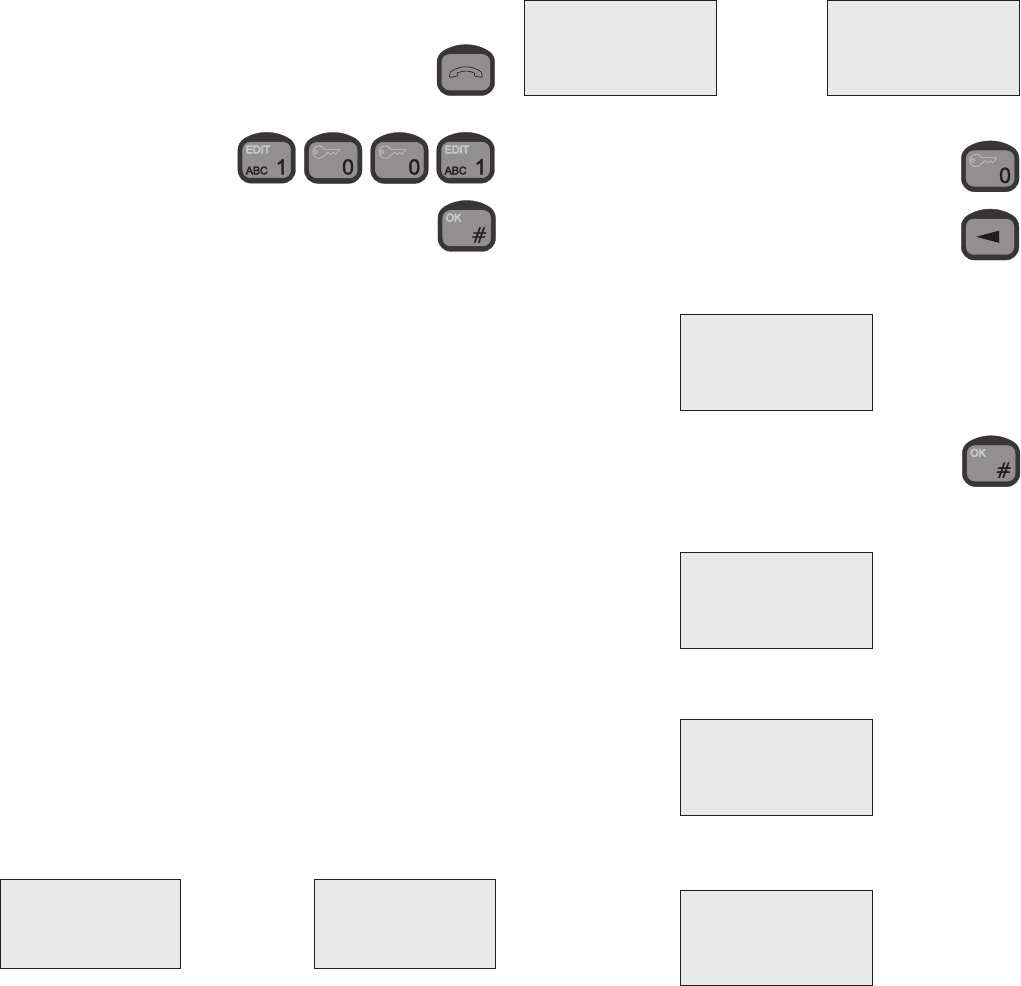
4
How to make an Internal Call
Entering a telephone number on a handset follows the procedure
shown with this example:
1. Hook off either by removing the handset from the hook
or by pressing the hook key
2. Internal number, e.g. 1 0 0 1
3. Confirmation #
Factory setup of extension numbers are:
PSTN/PABX: 1000
Handset 1: 1001
Handset 2: 1002
Handset 3: 1003
Handset 4: 1004
Making a Manual Call
Provided that no internal or external calls are in progress and that
the handset is enabled and unlocked, it is possible to make an
internal call.
Furthermore, if a valid SIM card has been inserted into the SIM card
slot and the correct PIN code has been entered or the PIN code has
been disabled, it is also possible to make an external call.
In order to be able to make a manual call, the handset must either be
in ready state or inside the phone book. For a description on how to
return to ready state, see section “About this Manual”. If the idle text
differs from ‘Ready’ (e.g. SIM card messages) only internal calls are
possible.
Now in order to make a manual call, do the following:
1. Hook off.
If the system is occupied, a busy tone is heard in the earpiece/
speaker, and the display shows either
or
Internal
call External
call
0512
depending on whether an internal or external call is in progress.
If the system is ready to make a call, a dialling tone is heard in the
earpiece/speaker, and the display shows:
or
2. Use the numeric keys to key in the number you want to dial.
For external calls, first key: 0
To delete the previous digit, if desired, press:
An example
3. Confirm the call and start dialling by pressing:
4. A calling tone is heard from the earpiece/speaker, and the
display shows:
5. When the connection has been established, the display shows:
6. When one of the calling parties end the call or if for some reason
the call is dropped, the display will show:
Enter number
_
Type 0 for
ext. calls
Enter number
_
Internal
calls only
Connecting
Connected to
0 0 0 4 5 7 0 1 3 7 0 0
0 _
Enter number
0 0 0 4 5 7 0 1 3 7 0 0
0 _
Call
terminated
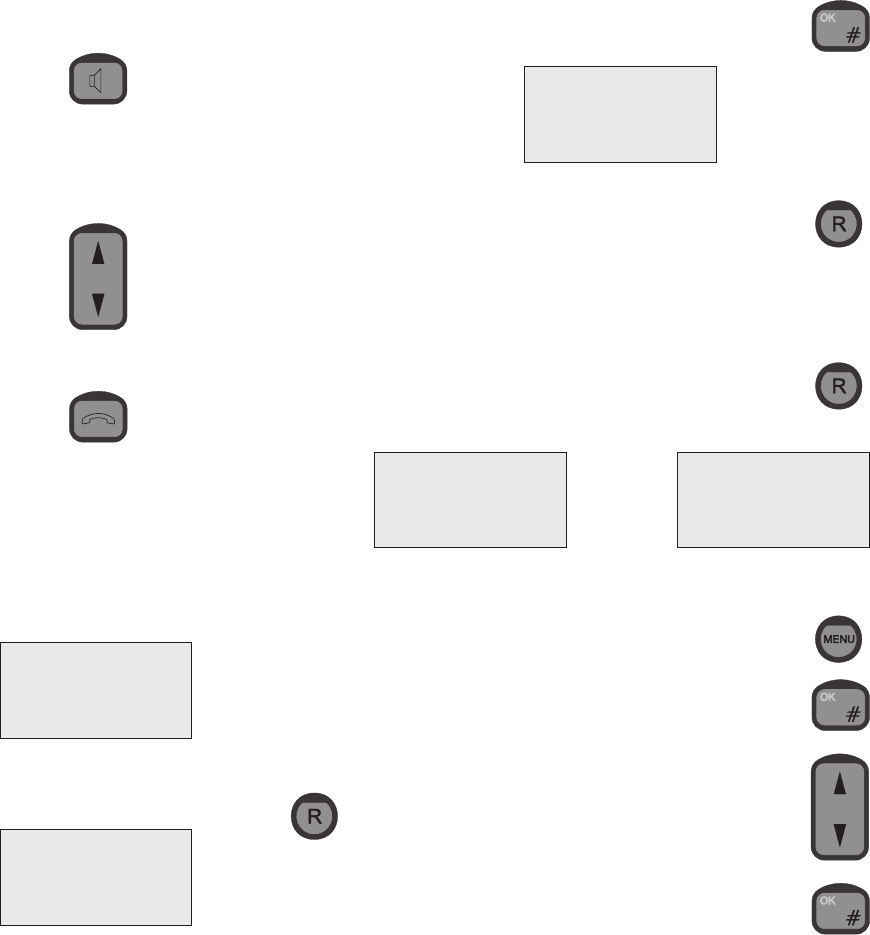
5
Answering a Call
NOTE: When the speaker is off you can see that you are being
called, (the display will show “Incoming Call”) but there will be
no sound in the speaker. The speaker can be toggled on and off
using:
1. When the handset rings, remove it from the hook and communi-
cate as on an ordinary telephone.
2. Adjust the volume in the earpiece or loudspeaker by means of:
3. When you want to stop communicating, hang up or press hook
key.
Call Transfering
A call can be transfered to another handset. The procedure depends
on whether or not the call is answered before it is transferred.
Transferring AFTER Answering
When you answer a call, the display shows:
To transfer the call:
1. Press:
Connected
0512
2. Now, key in the extension number to which the call should be
transferred.
3. To transfer the call, press:
- or:
To cancel transferring the call, press:
Automatic Transferring BEFORE Answering
A call can be transferred to another handset automatically before it is
answered. To see if the auto transferring function is enabled,
press:
The display will show eg.:
or
The auto transferring parameters can be set up individually for each
handset in the function menu:
1. To enter the function menu, press:
2. To select the “Setup” item, press:
3. To find the “Transfer” item, use:
and press:
Call is
transferred
Call trans-
fer enabled
Local: 1001
Delay: 0 sec 10
Call trans-
fer disabled
Enter number
_

6
4. To select “Enable” or “Disable”, use :
and press:
The function has now been enabled or disabled depending on your
choice.
To select to which extension number(s) incoming calls should be
transferred, follow the steps described above. In step 4, however,
select “Extension”, after which you can key in and confirm the
wanted extension number.
To specify the time in seconds (0-60) that the call should ring before
it is transferred to the specified unit, follow the steps described
above. In step 4, however, select “Delay”. If the delay is set to 0
seconds, the call is transferred immediately; before the first handset
rings, the call is transferred to the chosen transfer destination.
0512
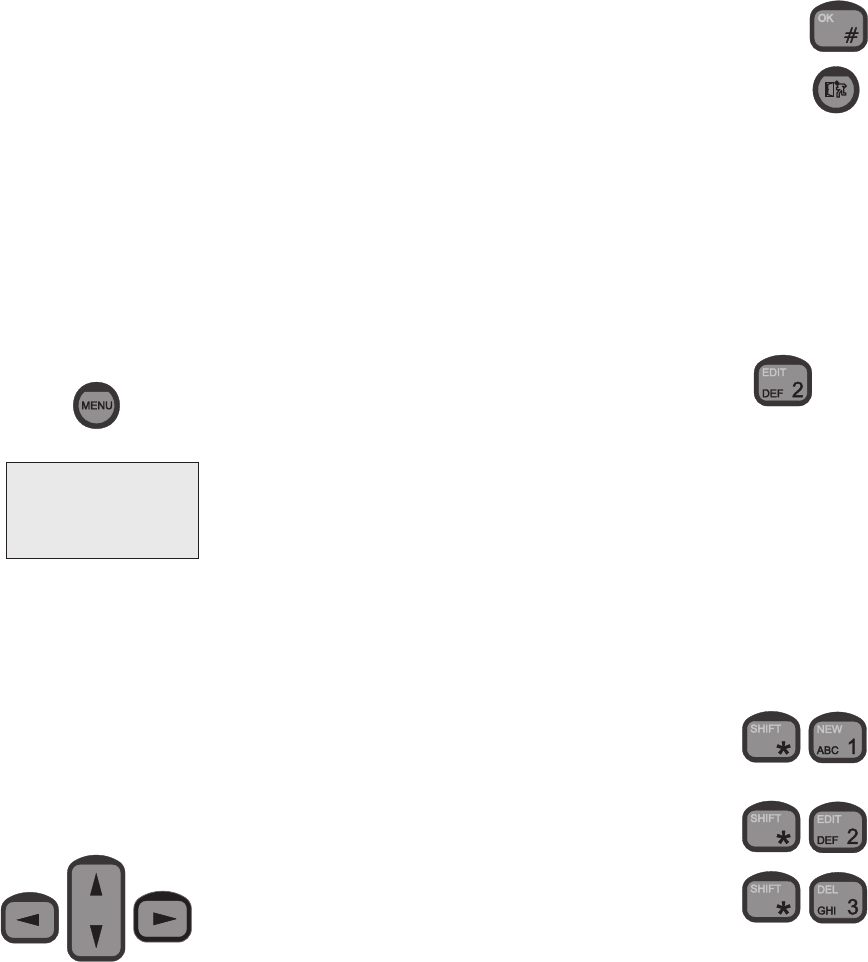
7
Handset Advanced Operation
The system features a large number of special functions. For those
of the functions that are likely to be used the most, there are special
buttons or shifted functions in connection with the numeric keys. The
functions used less often can be found in the menu system.
Menu System
The handset contains several functions for changing the system
settings, showing the status of certain system parameters, configura-
tions, and functions for testing the system.
The menu system can always be entered from an enabled and
unlocked handset which is in ready state. See section “Handset
States” on how to return to ready state.
To enter the function menu system, press the following key:
The function menus appear:
The “Setup” menu contains all functions for changing the system
parameters, such as volume, ringing tone, user names and pass-
words.
The “Call log” menu contains information on each call made,
including details about when the call was made, its duration, and the
receiver’s telephone number.
The “System” menu contains all functions needed for the system
administrator/super user to test and configure the system.
To navigate the menus, use the arrow keys:
0512
To confirm that you want to select an item, use the OK key:
To regret the last step, use the Escape key:
Functions marked with an asterisk (*) concern the specific handset.
All other functions are global, i.e. they concern the whole system.
The following table contains a total list of the entries in the function
menu system.
Keying in Names and Numbers
When keying in letters and numbers in the phone book, or in
connection with user names and passwords, you will need to know
how many times to press each key. Pressing the key once,
for instance, will give a “D”; pressing the key twice, will give an “E”,
etc. 1st push: D
2nd push: E
3rd push: F
4th push: d
5th push: e
6th push: f
7th push: 2
After each character keyed in, wait a little while to go to the next
character (the cursor appears when it is ready), or use the right
arrow key. The left arrow key deletes the last character entered.
When inside the phone book or user list;
• to create a new entry, press:
• to begin editing the entry selected on the list,
press:
• to delete the entry selected on the list, press:
MENU
> Setup
Call log
System
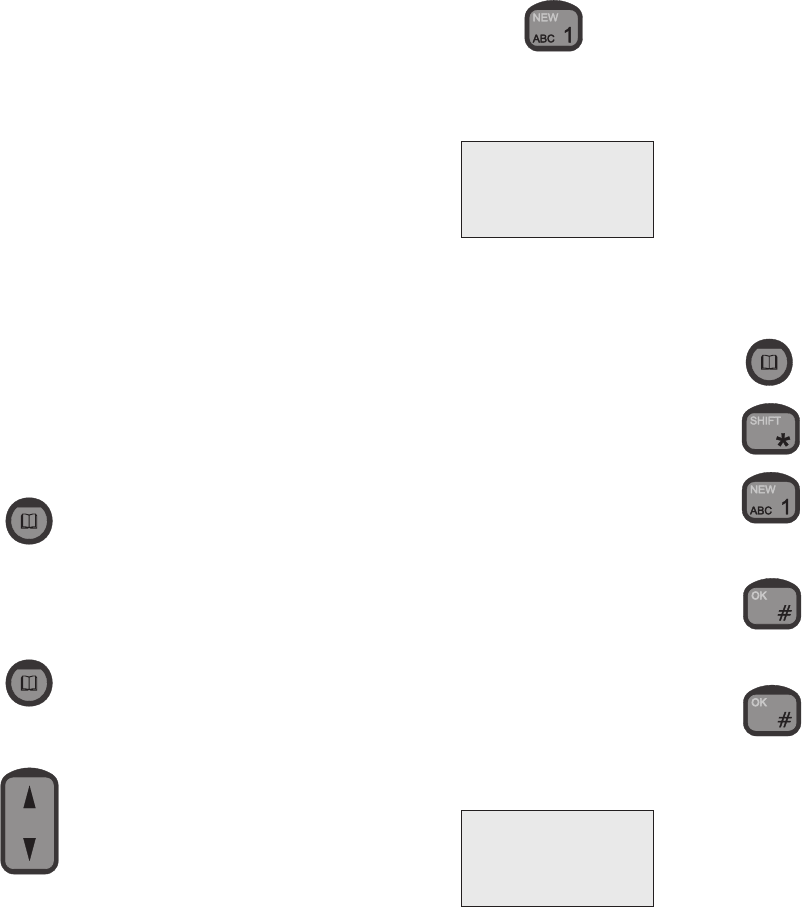
8
Phone Book
The phone book offers the following facilities:
• Up to 100 entries with names and numbers can be stored. A
telephone number may consist of up to 24 digits, and a name
may contain a maximum of 11 characters.
• Any of the 100 stored telephone numbers can be used to initiate
a call.
• Each entry in the phone book can be deleted.
• New entries can be added to the phone book as long as some of
the 100 entries are free.
• The name and/or number stored in every entry can be changed.
• The stored entries can be searched alphabetically.
• The current extension/local number for all connected control
units are stored in the phone book. However, only one control
unit at a time can operate in new, edit, or delete mode. If a
control unit tries to enter one of these modes, and another
control unit has done the same, the display will show: Phone
book occupied.
Entering the phone book
The phone book can always be entered from an enabled and
unlocked handset, which is in ready state. See section “Handset
States” on how to return to ready state.
Open the phone book by pressing:
Searching the Phone Book
When entering the phone book, the display shows a list beginning
with the first entry in the phone book:
To find previous/following entries, use:
When you have reached the last entry, the phone book starts from
the top again with the first entry.
Alphanumeric Search
You can also search the phone book by means of the alphanumeric
keys. When inside the phone book, pressing e.g.
moves the cursor to the first entry beginning with an A. If no entry
begins with an A, or if the key is pressed twice, the cursor moves on
to the first entry beginning with a B, etc.
Storing a New Entry in Phone Book
To store a new entry (name and number) in the phone book:
1. To enter the phone book, press:
2. To enter the shifted functions, press:
3. To select the new mode, press:
4. Key in the name that corresponds to the number.
5. To store the name, press:
6. Key in the number using of the numeric keys.
7. To store the number, press:
Remember to add “0” in front of country prefix to allow external calls
An example:
0512
>Andrew
Brian
Claus
Dennis
Enter number
0 0 0 4 5 7 0 1 3 7 0 0
0 _
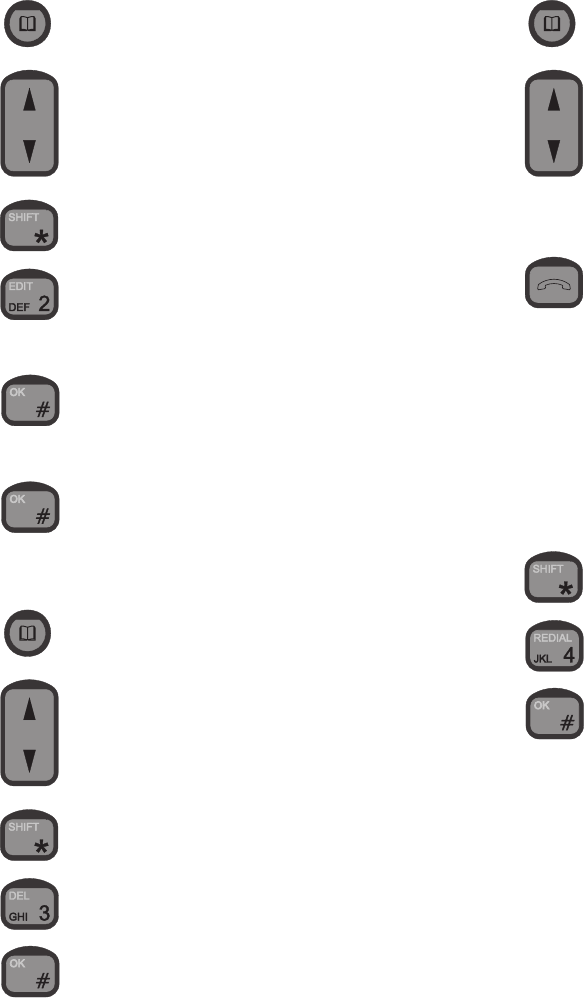
9
0512
Changing a Number Stored in the Phone Book
To edit a stored number in the phone book:
1. To enter the phone book, press:
2. To select the desired entry in the phone book, press:
3. To enter the shifted functions, press:
4. To select the edit mode, press:
5. Key in the name that corresponds to the number.
6. To store the name, press:
7. Key in the number using of the numeric keys.
8. To store the new number, press:
Deleting a Stored Entry in the Phone Book
1. To enter the phone book, press:
2. To select the desired entry in the phone book, press:
3. To enter the shifted functions, press:
4. To select the delete mode, press:
5. To confirm deleting the selected entry, press:
Calling a Number from the Phone Book
To call a number stored in the phone book:
1. To enter the phone book, press:
2. To select the desired entry in the phone book, press:
3. To prepare for making the call:
• Lift the handset
or
• Press:
Now, follow the steps described in connection with “Making a manual
call”, beginning with step 3.
Redialling
It is possible to redial the last number dialled by the current user. To
do so:
1. Hook off.
2. Press:
3. Press:
4. To initiate the call, press:
A ringing tone is now heard from the handset. To go on with the call,
follow the steps described in connection with “Making a manual call”,
beginning with step 4.
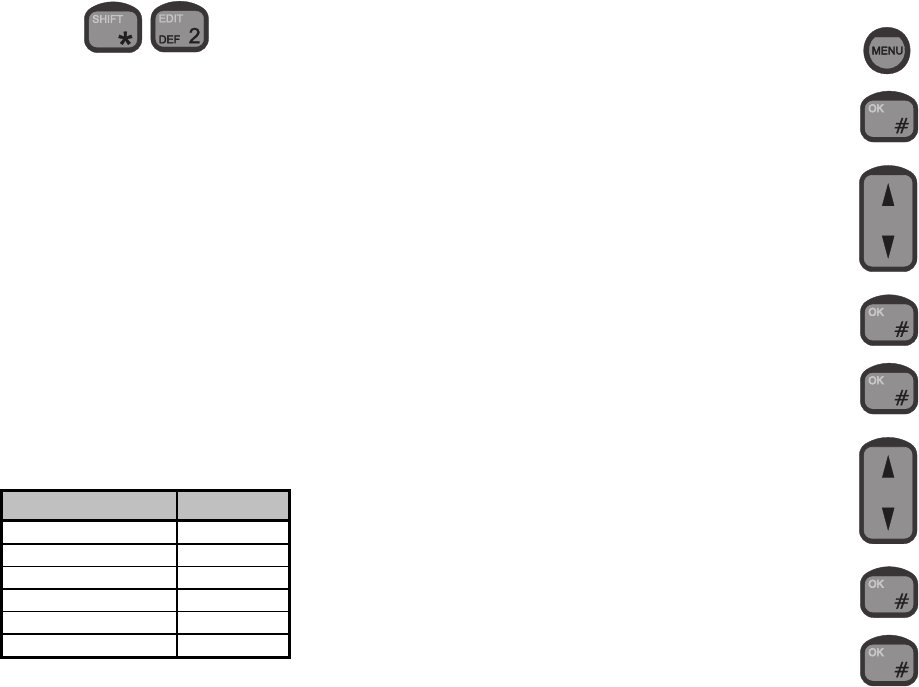
10
Security Lock Function
The handset can be protected against unauthorized use via the
security lock function. This works together with the list of user names
and corresponding passwords. The security lock requires that the
user selects his user name from the list, and then keys in his
personal password before the handset can be used for making calls.
The default password for all the users on the user list is “password”,
i.e. 61778562. Passwords can be edited in the Setup/Password menu
(the user’s own password) or in the /Setup/Users menu using
(Passwords of users with a lower priority than the current user).
The security lock function ensures that only users recognized by the
system can unlock the handset and make calls through the Iridium
system.
Answering incoming calls is not protected by the security lock.
Note that from a PSTN phone (stand alone or via PABX), the
security lock is not an option.
The security lock function affects all control units. That means that if
one control unit disables the lock, the lock is disabled on all control
units connected. The same goes for enabling the lock.
User ID/User Name List
Every user specified in the system is given a priority value. The
priority value determines what the user is allowed to do in the
system. By default, the user list contains 6 entries with different
priority values. The 6 default users are shown below.
User ID/User Name Priority value
SUPER USER 0
Captain 1
Commander 4
Officer 10
Crew 100
Passenger 200
The SUPERUSER has the highest priority in the system and is
therefore not restricted in any action. The SUPERUSER can edit all
other users. A user can create, edit, and delete users of a lower
priority; e.g. a user of priority value 4 may create, edit, and delete
users of priority values 10, 100, and 200.
Each item in the handset menu has a priority value. The priority
value of the item and the user’s priority value determine
whether the user has access to the item or not. The blocked items
are indicated by a star * in front of the item.
The user ID is written in the call log and it is thus possible to identify
who has made which calls.
Enabling Security Lock
If the security lock function has been disabled, it can be enabled by
users with a priority value of 4 or less:
1. To enter the function menu, press:
2. To select the “Setup” item, press:
3. Find the “Lock” item using:
and press:
4. To select the “Enable” item, press:
5. Find a user name of priority level 4 or less, using:
and press:
6. Enter the password using the numeric keys, and press:
The handset from which the system lock was enabled, is not actually
locked before an explicit lock is issued via pressing:
0512
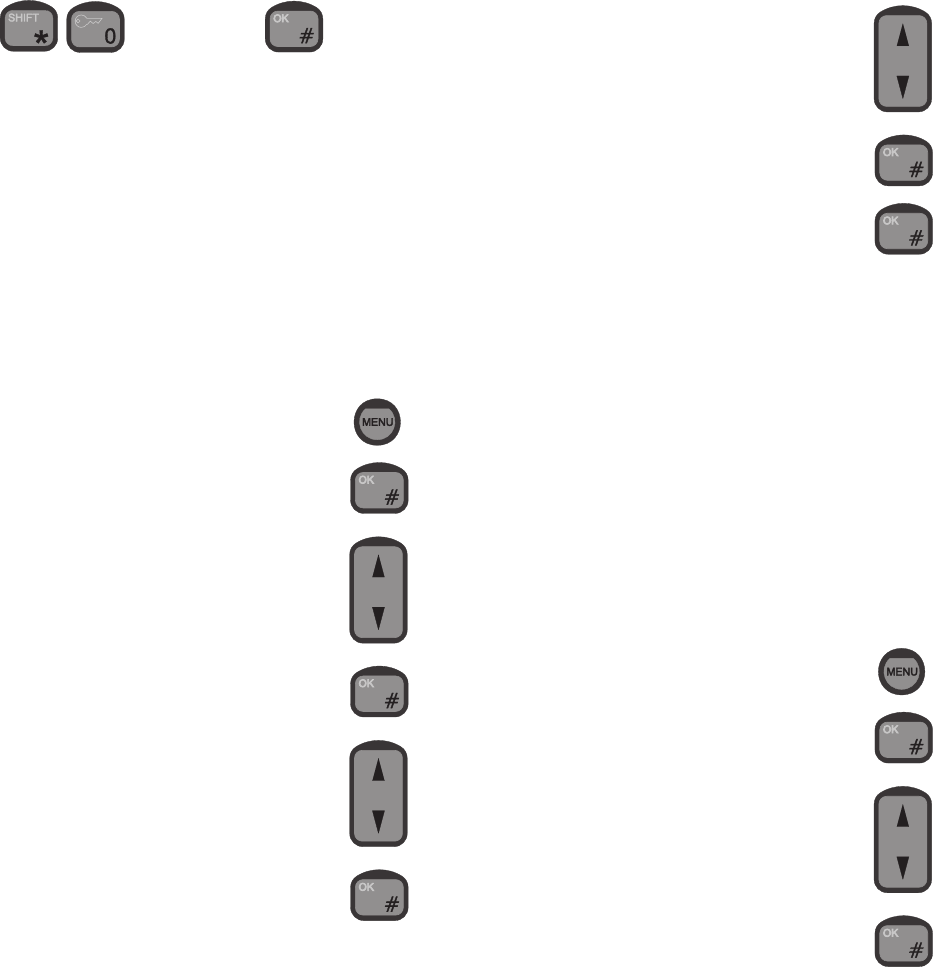
11
0512
and confirming by
This action can only be carried out if the handset is in ready state.
See section “About this Manual” on how to return to ready state.
When the lock is enabled, all other control units are automatically
locked if they are in ready state (no call in progress and not inside
the menu system or phone book). If one of these control units is not
in ready state, it is automatically locked when returning to ready
state.
Disabling Security Lock
To disable the security lock, the user has to be identified with a
priority value of 4 or less (Commander, Captain, or SUPER USER).
To disable the security lock:
1. To enter the function menu, press:
2. To select the “Setup” item, press:
3. Find the “Lock” item using:
and press:
4. Find the “Disable” item using :
and press:
5. Find the right user name using:
and press:
6. Key in the password, and press:
The security lock function is now disabled. This means that the
handset is ready for use for everyone without any identification of the
user. To avoid misuse of the handset, the user who disables the
security lock is asked to set the priority value. This is done by
selecting a user name from the user list and keying in the associated
password. That user name is then used as the default user of the
unlocked system. Information about subsequent outgoing calls from
any handset will be logged under this default user name.
Note:
If the security lock is used for keeping track of the crew calls, each
crew member must unlock the handset before use. Do not forget to
lock the handset after use. The handsets are not locked automatically.
Password
A user may change his password at any time. To do so:
1. To enter the function menu, press
2. To select the “Setup” item, press
3. To find the “Password” item, use:
4. To confirm, press:
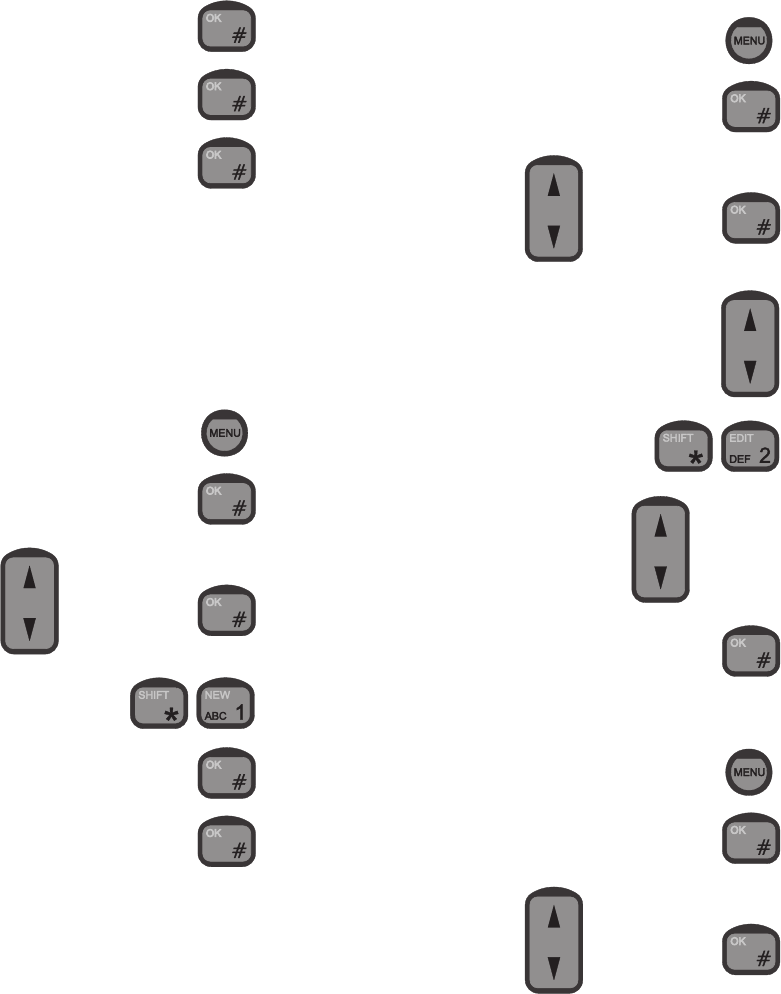
12
5. Key in the old password and confirm by pressing
6. Key in the new password and confirm by pressing
7. Re-enter the new password and confirm by pressing
Users
Up to 25 users can be registered in the system by manually creating
an entry for each user. Both a user name and a temporary password
must be entered for each user.
A user may create, edit, and delete users with a priority value higher
than the user’s own priority value.
Adding a New User to the System:
1. To enter the function menu, press:
2. To select the “Setup” item, press:
3. To find the “Users” item, use and confirm by
4. To create a new user, press:
5. Key in the new user name, and confirm by
6. Key in the password, and confirm by
A new user has now been added to the system with a default priority.
The priority is one of the properties that can be edited using the
procedure described next.
Editing the Properties of an Existing User:
1. To enter the function menu, press:
2. To select the “Setup” item, press:
3. To find the “Users” item, use and confirm by
4. To find the user to be edited, use:
5. To edit the user, press:
6. To go to the user property to be edited, use
and confirm
by
Deleting an Existing User:
1. To enter the function menu, press:
2. To select the “Setup” item, press:
3. To find the “Users” item, use and confirm by
0512
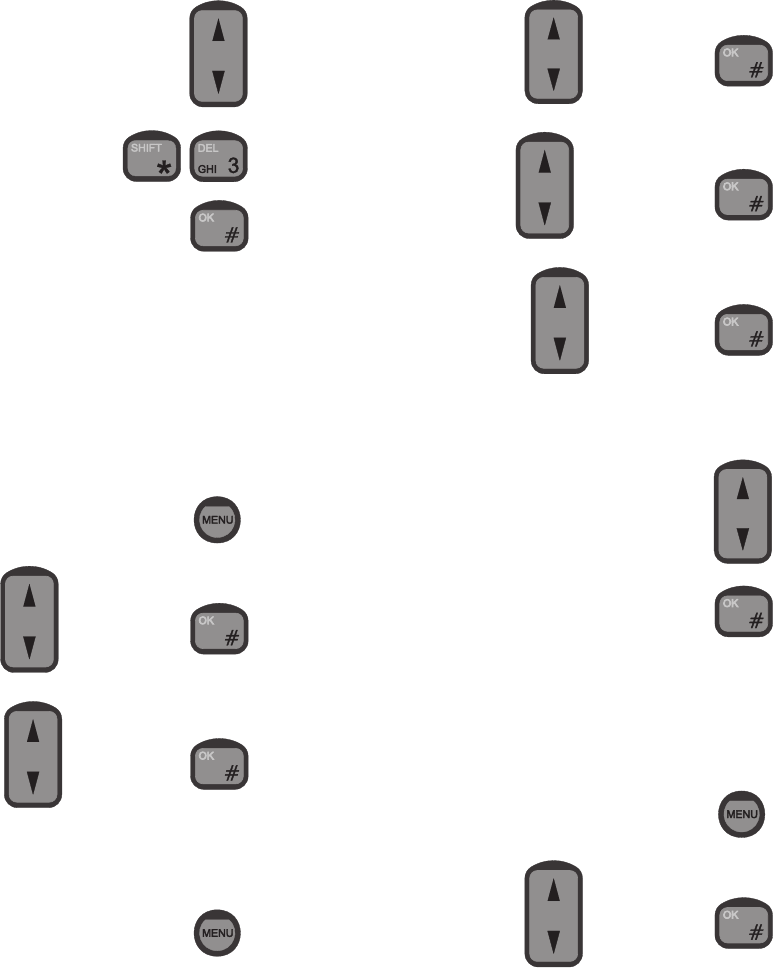
13
0512
4. To find the user to be deleted, use:
5. To delete the user, press
6. Confirm by
Call Log
Information about all outgoing calls are logged. The latest 50
outgoing calls can be found in the call log. The duration of the last
outgoing call can be retrieved.
Notice! The user name that is used for unlocking the handset is the
name stored in the call log each time an external call is made.
Viewing the Last Call
1. To enter the function menu, press:
2. Find the item “Call Log” using
and confirm by
3. Find the item “Last Call” using and confirm by
Viewing the Last Private Call Log
The call log for the current user can be retrieved as shown in the
following:
1. To enter the function menu, press:
2. Find the item “Call Log” using
and confirm by
3. Find the item “Private” using and confirm by
4. Find the item “Outgoing” using and confirm by
A list showing the phone numbers of the outgoing calls made by the
current user now appears on the display.
To see more details about a specific call, find the call using
and confirm by
The total account of the current user can be retrieved by choosing
“Account” instead of “Outgoing” at step 4.
Viewing the Global Call Log
The global call log for all users in the system can be retrieved as
shown in the following:
1. To enter the function menu, press
2. Find the item “Call Log” using
and confirm by
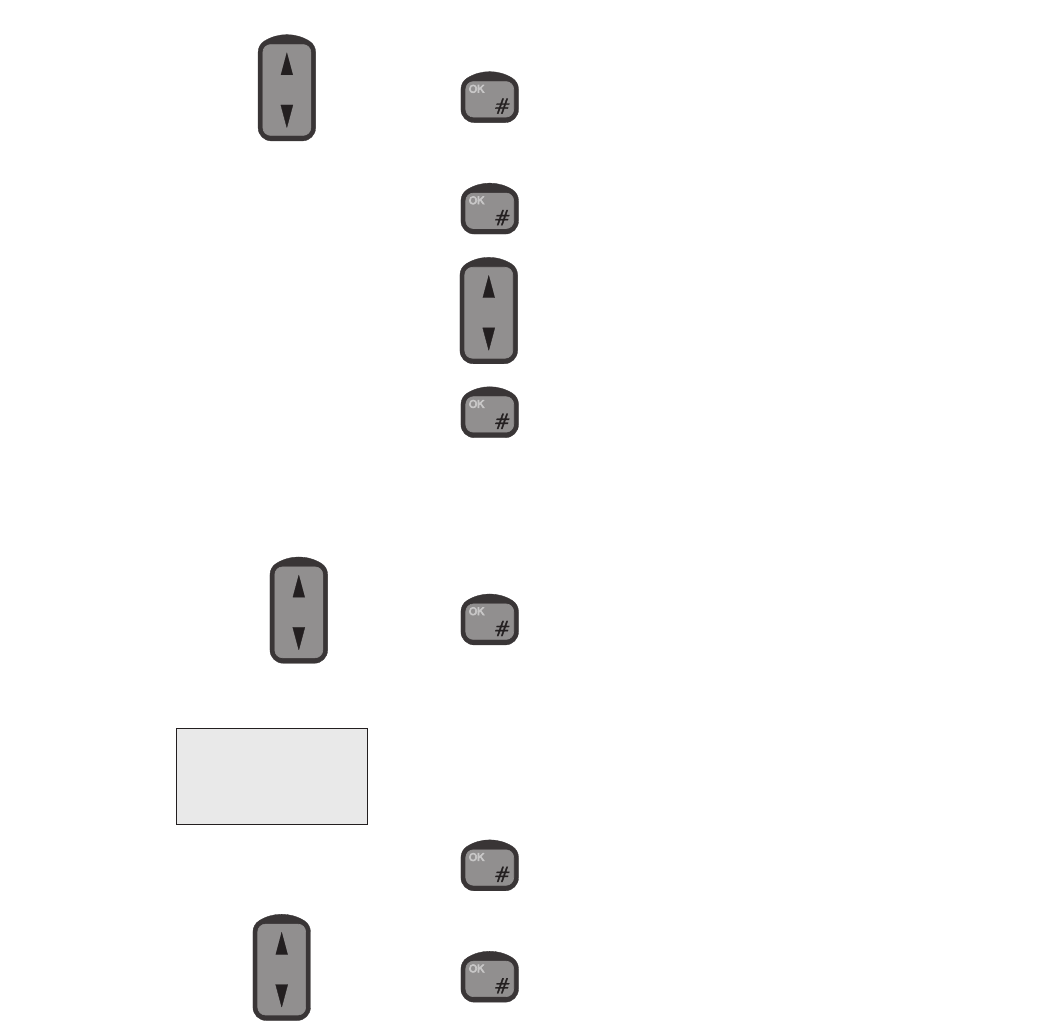
14
3. Find the item “Global” using and confirm by
A list of all outgoing calls made from the system can now be
retrieved by choosing the item “Outgoing” and pressing
To see more details about a specific call, find the call using
and confirm by
Alternatively, the account of each user can be retrieved as shown
below:
1. Follow steps 1-3 above.
2. Find the item “Account” using and confirm by
The available items are now:
To select e.g. a specific user, choose “Users” and press
Now, find the user by means of and press
Print Call Log to a Personal Computer
Connect a PC/Laptop to the RS232 service interface port with a
standard 9 wire serial cable. (RX on pin 2, TX on pin 3 and Ground
on pin 5)
On the PC/Laptop you can use a terminal program (e.g. hyper
terminal) to read out the call log.
Terminal port set-up: 9600 baud, 8 data bit, no parity and 1 stop bit.
In the terminal program press ESC twice and you will
see:
Thrane & Thrane a/s service interface
SI>
The call log can be read out in 3 different modes.
1) Continues print mode
2) Latest calls
3) Calls made by a specific user
The call log record format is as follows:
[Date], [Time], [Call duration], [User name], [Subscriber name],
[Telephone number]
An example:
A call made April 4, year 2004, time 12.01.22, by SUPERUSER to a
telephone number 00045 70101155 (labelled with HOME in the
address book) and the call duration was 1 minute and 16 seconds.
Will be read out as:
04/04-2004,12:01:22,01:16,SUPERUSER,HOME,0004570101155
A comma separates each position.
Continues print mode
To read out a list of all completed calls, write “CALLS ON” on the
command line and press enter.
An example:
SI> CALLS ON [enter]
Now the call records are listed continuously until the mode is
disabled or the transceiver unit is restarted.
To disable the continuous print mode write “CALLS OFF” on the
command line and press enter.
An example:
SI> CALLS OFF [enter]
>Users
Phone
Unknown
Deleted Users
0512
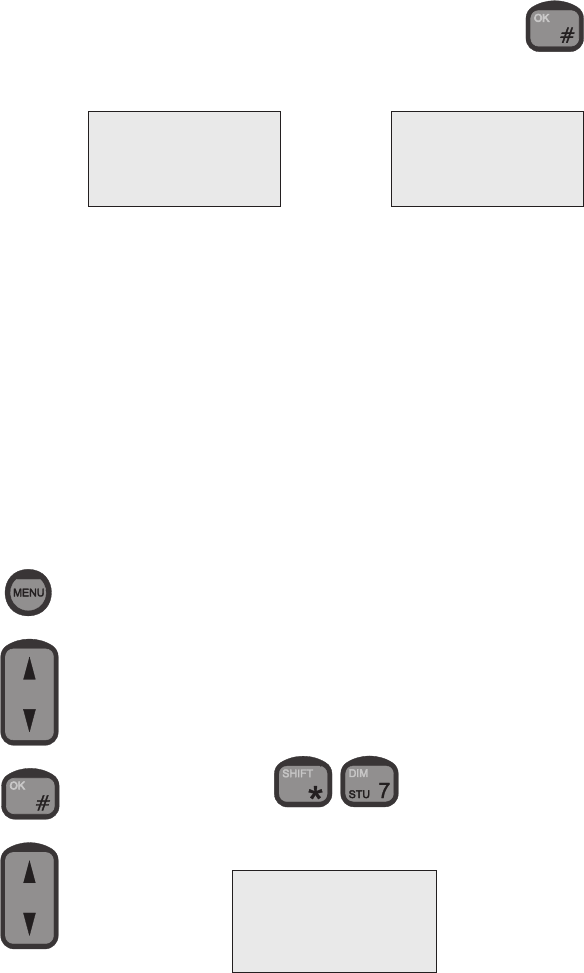
15
0512
DATE-TIME
>Status
Set
Sys.update
Latest calls
To read out a list of the latest calls, write “CALLS [number of last
calls] on the command line and press enter. Up to 50 calls can be
listed.
An example:
SI> CALLS 27 [enter]
When following this example, the last 27 calls will be read out,
starting with the latest call.
Calls made by a specific user
To read out calls made by a specified user, write CALLS [USER
NAME]
An example:
SI> CALLS SUPERUSER [enter]
This will sort out all calls made by SUPERUSER among the last 50
calls in the call log and read out each record.
Setting Time and Date
Time and date can be displayed and adjusted manually. The time is
used in the call log. Adjusting the time requires that the user is
identified with a priority value of 4 or less (Commander, Captain, or
SUPER USER).
1. To enter the function menu, press:
2. Go to the “System” item using:
and press:
3. Go to “Time/date” using:
and press:
You can now choose between “Status”, “Set”, “System update”,
“GPS update” and “CNT update”
Status: Shows current time and date (from system).
Set: Allows you to edit time and date manually, using the numeric keys.
Sys. update: If this option is chosen, the time written in the display
is updated using an internal clock in the transceiver unit.
If power is removed from the transceiver the clock will continue
running for up to 24 hours.
GPS. update: If this option is chosen, the time written in the display
is updated using the connected GPS, if any. Consequently, even if
your Iridium system is turned off and then on again, the clock will still
be adjusted to the correct time each time a GPS update is received.
If no GPS is available, it makes no sense choosing this option.
CNT. update: If this option is chosen, the time written in the display
is updated using a software counter. Consequently,
if your Iridium system is turned off and then on again, the
clock will be reset to a default time. The correct time must then be
set again manually each time.
Setting Dimmer and Contrast
To adjust the background light and the contrast level, first press the
two keys:
The dimmer/contrast menu appears:
Set
Sys.update
GPS.update
>CNT.update
DIM/CONTRAST
>Dimmer
Contrast
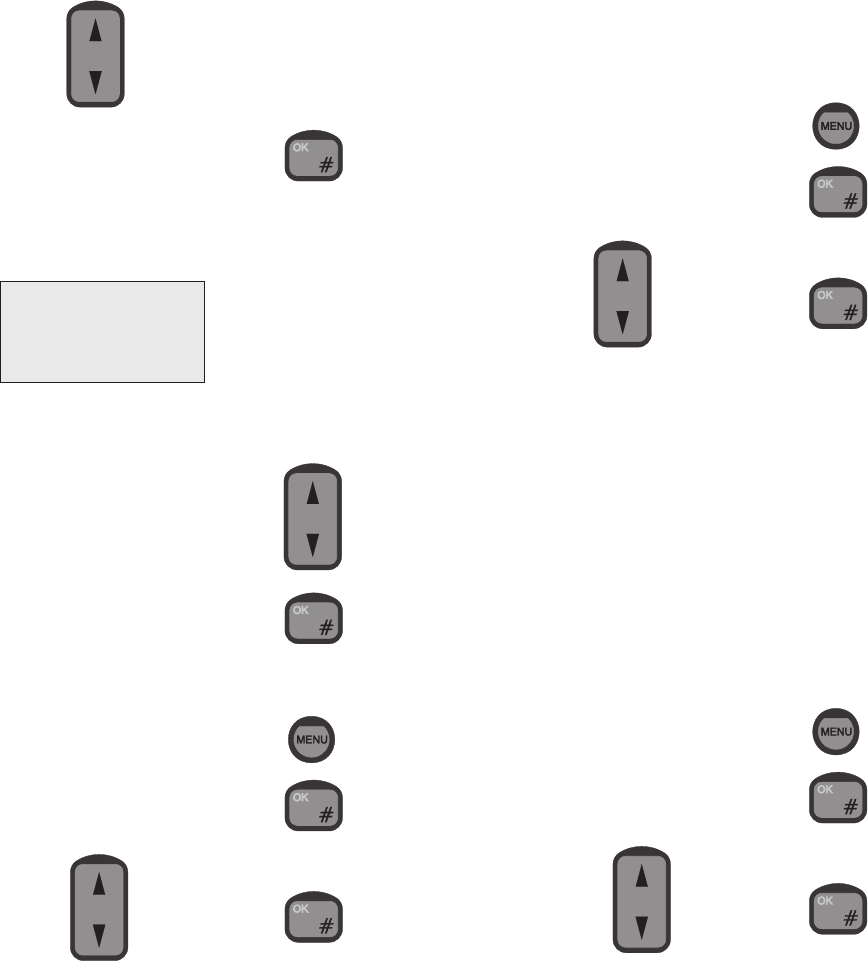
16
Now, move to the desired item – dimmer or contrast – by means of:
Then, to select the item, press:
An example
When you select dimmer in the dimmer/contrast menu, the display
shows the dimmer menu:
To enable or disable the light, select the On or Off item respectively.
To adjust the dimmer level, select the Level item.
Then, to increase or decrease the dimmer level, use:
For the changes to take effect, press:
The dimmer/contrast menu may also be entered via the “Setup”
menu as follows:
1. To enter the function menu, press:
2. To select the “Setup” item, press:
3. Find the “Light” item using and press:
GPS
Via this menu item, it is possible to obtain the geographical position
in terms of longitude and latitude if an optional GPS receiver is
connected via the transceiver. If this is the case, the position is
available by going through the following steps:
1. To enter the function menu, press:
2. To select the “Setup” item, press:
3. Find the “GPS” item using and press:
Display
For each handset, the user may select the information to be shown in
the display when the handset is in ready state. However, the state of
the system will always be shown in the display. The available
choices are:
•Time/date: Both the time (hours, minutes, seconds) and the date
is shown.
•Time: Only the time (hours and minutes) is shown.
•Position: If a GPS receiver is connected to the transceiver,
choosing “Position” will show the geographic position in terms of
latitude and longitude.
•State only: Only the state of the transceiver is shown.
If for instance you want to choose time/date;
1. To enter the function menu, press:
2. To select the “Setup” item, press:
3. Find the “Display” item using and press:
DIMMER
>On
Off
Level
0512

17
0512
4. Find the “Time/date” item using and press:
To see the effect, exit the menu system.
Billing
When a mobile originated call is initiated from the RJ11 port (PSTN/
PABX) and the call is connected to the remote user, the system
sends the billing tone to the PSTN/PABX at the RJ11 port. The tone
lasts for 500ms. Some PABX can catch this tone and start billing the
user at the PABX for the call.
Enter Billing Menu
1. To enter the function menu press:
2. Select the setup item
3. Select billing item
The following options are available in the billing menu.
Status
Select status will show if the billing is enabled or disabled and also
show the billing frequency.
Enable
Select enable will enable the billing tone
Disable
Select disable will disable the billing tone
Frequency
Select frequency, select 12kHz or 16kHz, refer to PABX manual to
select correct frequency.
SIM Card Handling
Your Iridium equipment monitors the SIM card status. The status
information is shown in the display of each handset in ready state.
SIM Card Messages
As long as one of the following messages are seen in the display,
the SIM card currently inserted in the transceiver cannot be used for
making external outgoing calls.
•SIM card blocked: This message indicates that a wrong pin
code has been entered three times in a row with the current SIM
card inserted into the transceiver. To unblock the SIM card, enter the
correct PUK1 code.
•Card blocked permanently: This message indicates that a
wrong PUK1 code has been entered ten times in a row. The SIM
card is now permanently blocked and cannot be unblocked.
•SIM card defective: This message indicates that your Iridium
equipment has detected that a SIM card has been inserted into the
SIM card slot. For some reason, however, the Iridium equipment
cannot communicate with the SIM card.
•SIM card validation: This message indicates that a valid SIM
card has been inserted into the SIM card slot, and that the pin code
just entered is being validated by the Iridium system.
Note: In case of SIM card problems you must contact your Iridium
Service Partner for help.
Enabling and Disabling PIN Codes
Each SIM card has an associated PIN code. In order to prevent
unauthorized use of SIM cards, your Iridium equipment is capable of
enabling and disabling the associated PIN codes.
When the PIN code from a given SIM card is enabled, the user must
enter the current value of this PIN code each time the SIM card is re-
entered into the SIM card holder in the transceiver. When the PIN
code for a given SIM card is disabled, the SIM card can be used for
making external outgoing calls, provided that it is not defect or
blocked.
Enabling the PIN Code
1. To enter the function menu, press:
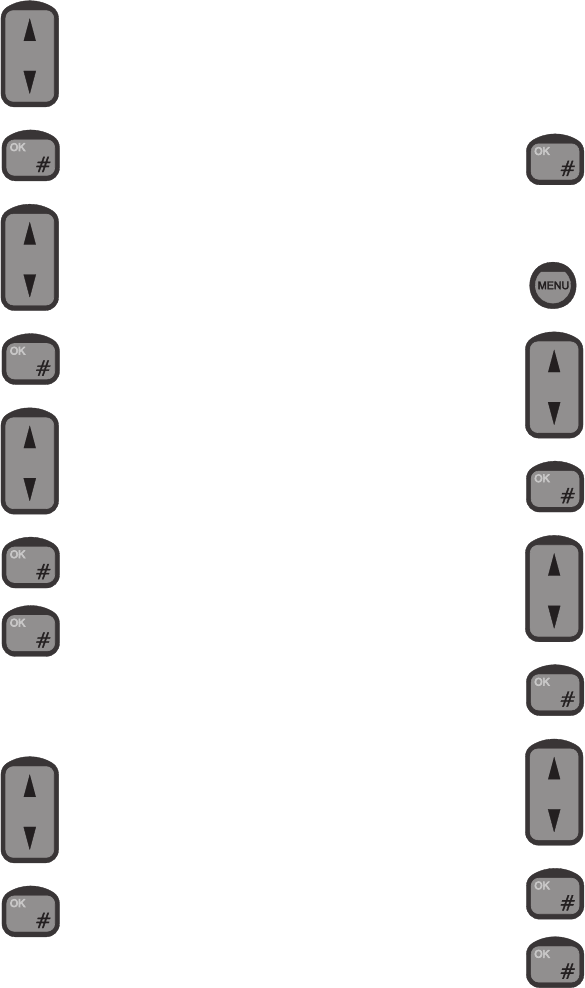
18
2. Find the “System” item using:
and press:
3. Find the “SIM Card” item using:
and press:
4. Find the “PIN enable” item using:
and press:
5. Key in the PIN code and press:
Disabling the PIN code
Follow steps 1 – 5 above with the following substitution:
4 Find the “PIN disable” item using:
and press:
Entering the PIN Code
Each time a valid SIM card with an enabled PIN code is inserted into
the SIM card holder, the current value of the associated PIN code
must be entered using the alphanumeric keys. The PIN code must be
a number consisting of 4 to 8 digits.
In order to enter the PIN code, do the following:
1. Key in the 4-8 digit PIN code and press:
Changing the PIN Code
1. To enter the function menu, press:
2. Find the “System” item using:
and press:
3. Find the “SIM Card” item using:
and press:
4. Find the “Change PIN” item using:
and press:
5. Enter the current PIN code and press:
0512
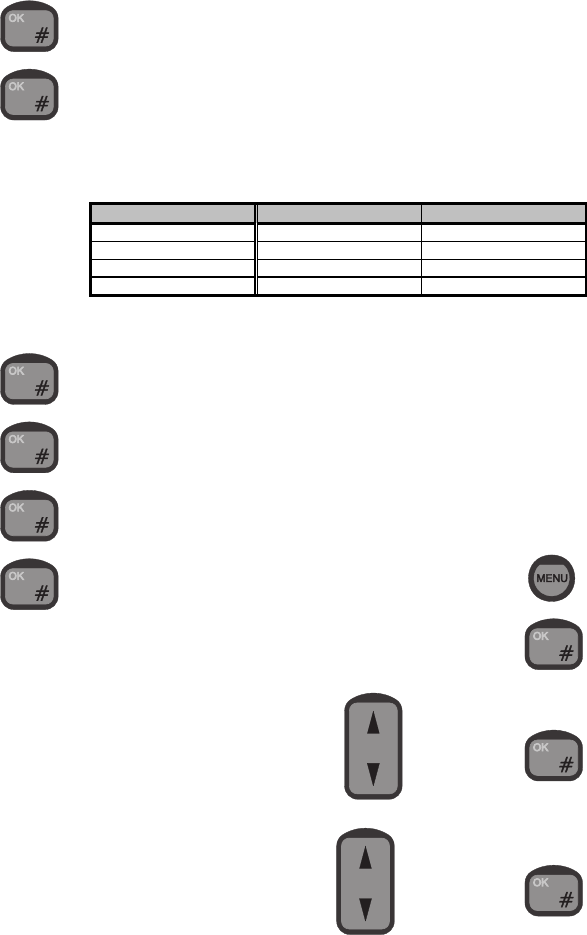
19
0512
6. Enter the new PIN code and press:
7. Reenter the new PIN code and press:
Unblocking a Blocked SIM Card
If a wrong PIN code has been entered 3 times in a row, the
transceiver blocks the SIM card. If a blocked SIM card is inserted
into the SIM card holder or if a SIM card already in the SIM card
holder is blocked, the display will show “SIM Card blocked” when the
handset is in ready state. In order to unblock a blocked SIM card:
Follow step 1 – 3 above.
4. Find the “PUK Code” item and press:
5. Enter the correct PUK code and press:
6. Enter a new 4-8 digit PIN code and press:
7. Re-enter the new PIN code and press:
Ringing Tone
When configuring each handset, the user can choose among a
number of different ringing tones.
The procedure is to choose one of the following 4 ringing tones:
• Deep
• High
• Alternating slowly
• Alternating fast
The ringing tone for internal incoming calls as well as the ringing
tone for external incoming calls are both affected by this single
choice. Therefore they cannot be set independently.
For external incoming calls, resulting tones are respectively:
• Deep
• High
• Alternating slowly
• Alternating fast
For internal incoming calls (local calls), the resulting tones are
respectively:
• Deep dual
• High dual
• Deep dual
• High dual
As mentioned above, choosing a ringing tone affects both the
external incoming ringing tone and the internal incoming (local call)
ringing tone according to the following table:
Choice of ringing tone External incoming calls Internal incoming calls
Deep Deep Deep dual
High High High dual
Alternating slowly Alternating slowly Deep dual
Alternating fast Alternating fast High dual
An internal incoming call (local call) can always be recognized by
two equal consecutive tones (hence the term “dual” in the table)
followed by a pause. The tones may be deep or high.
An external incoming call can always be recognized by a single
continuous sound sequence (deep, high, alternating slowly or
alternating fast), followed by a pause.
An example: To set the external incoming ringing tone to alternating
slowly, and the internal incoming ringing tone to deep dual (remem-
ber that they cannot be set independently as described above):
1. To enter the function menu, press:
2. To select the “Setup” item, press:
3. Find the “Ring tone” item using and press:
4. Find the “Slow alt.” item using and press:
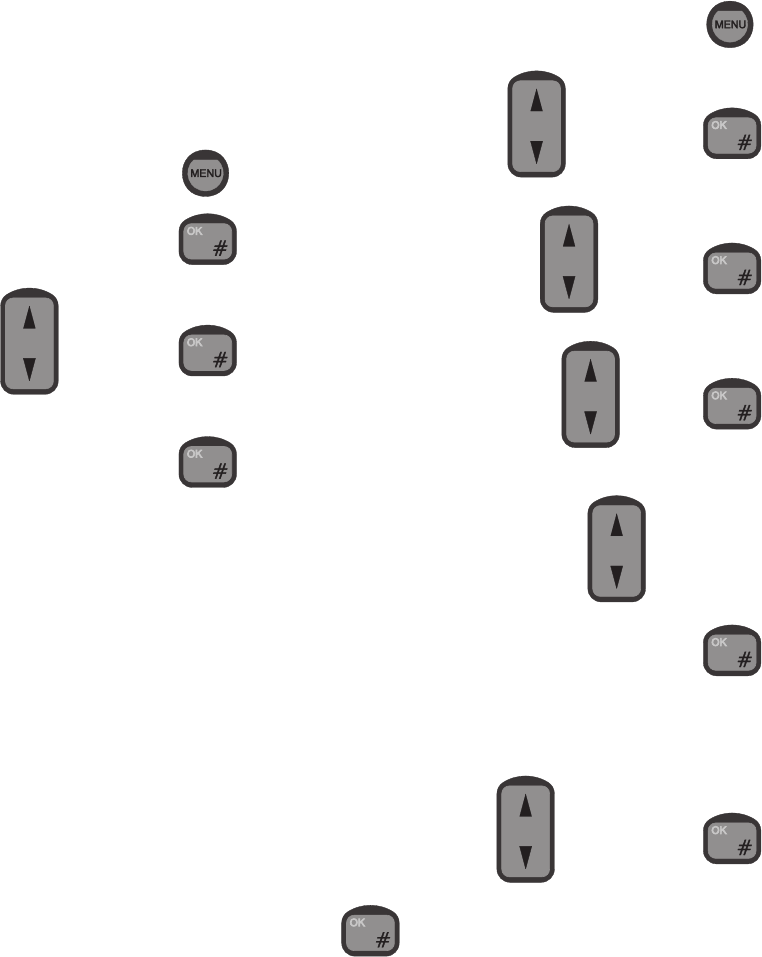
20
Extension
At any time, each handset is uniquely characterised by an extension
number. That is, only one handset at a time may have a given
extension number. The extension numbers may be changed, but no
two handsets can have the same extension number simultaneously.
To change the extension number of a handset do the following:
1. To enter the function menu, press:
2. To select the “Setup” item, press:
3. Find the “Extension” item using and press:
4. Key in a number below 10.000 that is not in use by any other
control unit, and press:
Note: The PSTN extension number cannot be changed.
Call Answer
If your Iridium equipment includes more than one control unit or a
control unit and a PSTN telephone, you may configure the answering
of external incoming calls in a number of different ways. The
available choices are:
•One CU: Choosing this option, you must specify the extension of
the control unit to which you want external incoming calls to be
directed automatically.
•PSTN: If there is a PSTN telephone connected to your Iridium
equipment, selecting this option will direct external incoming calls to
your PSTN telephone.
•All: Choosing this option will make all control units and the
PSTN telephone (if any) ring when your Iridium equipment receives
an external incoming call. Any of these units may be used for
answering the call.
An example: If you want all external incoming calls to be directed to
a control unit with the extension number 1001:
1. To enter the function menu, press:
2. Find the item “System” using and press:
3. Find the item “Call Answer” using and press:
4. Find the item “One CU” using and press:
5. Find the extension number of the handset to which you want all
external incoming calls to be directed, using
and press:
Alternatively, if you want to direct external incoming calls to your
PSTN telephone (if any), follow steps 1-3 above, and proceed as
follows:
4. Find the item “PSTN” using and press:
5. Press again to confirm that external incoming calls
should be directed to the PSTN telephone.
0512

21
0512
Call Forwarding
NOTE: This feature is a supplementary service available from
the Iridium network. Thrane & Thrane has no influence
on the availability and cannot guarantee that the service
is available. Please check the availability with your
Iridium Service Partner.
The Iridium network offers the possibility of forwarding incoming calls
to another phone number. This facility can be configured from your
Iridium equipment. The call forwarding can be divided into the
following two categories:
•Forward all calls: All external incoming calls will immediately be
forwarded to the number you specify when you activate this
category.
•Forward on not reachable: When your Iridium equipment has
been turned off or cannot for some reason be contacted by the
network or when the line of your Iridium equipment is occupied,
either by an internal or an external call, external incoming calls will
be forwarded to the number you specify when you activate this
category.
Note: By default, the above two categories of calls will all be
forwarded to your personal mailbox. When you activate a category,
the calls in this category will be forwarded to the number that you
specify and no longer to your personal mailbox.
In the following, the procedures for activating, restoring and review-
ing settings for the above two categories are described. As usual,
when manually dialling a number to call, this must be done from
ready state.
Forwarding all Calls (Unconditional Call
Forwarding)
Activate:
1. Hook off
2. Enter the following code *21*00 [country code]
[telephone number] # OK
by pressing the keys:
[country code] [telephone number]
Cancel:
1. Hook off
2. Enter the following code #21#OK
by pressing the keys:
Review forwarding number:
1. Hook off
2. Enter the following code *#21#OK
by pressing the keys:
Cancel All Forwarding
Activate:
1. Hook off
2. Enter the following code #002#OK
by pressing:
Reactivate and restore previous settings:
1. Hook off
2. Enter the following code *004#OK
by pressing:
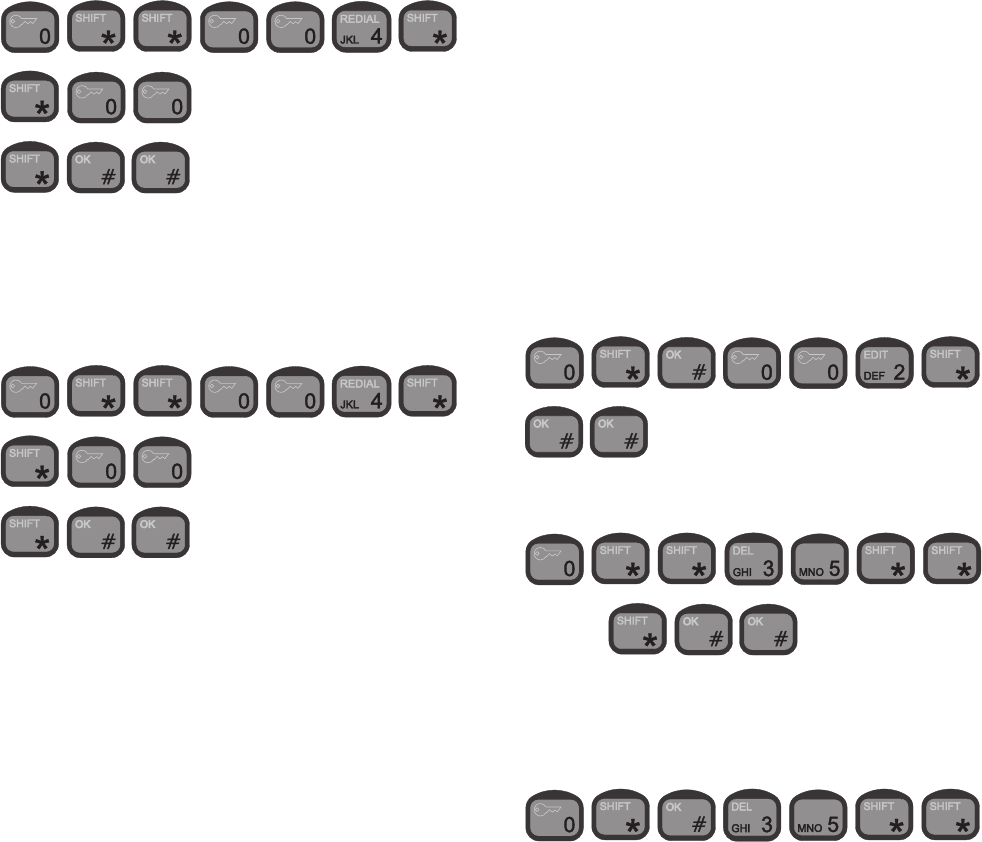
22
Call Forward When Unavailable (Busy + Not
Reachable + No Reply/No Answer)
Activate:
1. Hook off
2. Enter the following code *004*00[country code]
[telephone number]#OK
by pressing:
[country code] [telephone number]
Restore forwarding to personal mailbox:
1. Hook off
2. Enter the following code *004*00[personal mailbox
retrieval number]#OK
by pressing:
[personal mailbox retrieval number]
Note: Personal mailbox retrieval number is currently:
881631462990000
Call Barring
NOTE: This feature is a supplementary service available from
the Iridium network. Thrane & Thrane has no influence
on the availability and cannot guarantee that the service
is available. Please check the availability with your
Iridium Service Partner.
Call barring allows you to bar either all external incoming or all
external outgoing calls. If you bar external incoming calls, your
Iridium equipment will not receive external incoming calls. If you bar
external outgoing calls, nobody will be able to place external
outgoing calls from your Iridium equipment.
Note: External incoming calls will not be sent to your personal
mailbox if call barring of external incoming calls is active.
Before activating call barring, disable all types of call forwarding.
Call Barring of Incoming Calls
Activate:
1. Hook off
2. Before activating, cancel all forwarding #002#OK
by pressing the keys:
3. Enter the following code *35*[password]#OK
by pressing the keys:
[password]
Cancel:
1. Hook off
2. Enter the following code #35*[password]#OK
by pressing the keys:
0512

23
0512
[password]
Call Barring of Outgoing Calls
Activate:
1. Hook off
2. Before activating, cancel all forwarding #002#OK
by pressing the keys:
3. Enter the following code *33*[password]#OK
by pressing the keys:
[password]
Cancel:
1. Hook off
2. Enter the following code #33*[password]#OK
by pressing the keys:
[password]
Changing your password:
1. Hook off
2. Enter the following code *03*330*[old password]*[new
password]*[new password]#OK
by pressing the keys:
[old password]
[new password] [new password]
Voice Mail
NOTE: This feature is a supplementary service available from
the Iridium network. Thrane & Thrane has no influence
on the availability and cannot guarantee that the service
is available. Please check the availability with your
Iridium Service Partner.
Voice mail allows callers to leave a voice message in your personal
mailbox. As described in section “Call Forwarding”, by default
external incoming calls are forwarded to your personal mailbox if the
call is not answered, if your equipment is switched off, if your Iridium
system is occupied by an internal or external call or cannot, for some
reason, be contacted by the Iridium network. Therefore these calls
will be forwarded to your personal mailbox unless you set a new
telephone number to transfer to.
You may record a personal greeting which the callers will hear when
they are forwarded to your mailbox. After hearing your personal
greeting, callers can leave a voice mail message which is stored in
your mailbox.
Your personal mailbox has a lot of features which can be configured
by you. The caller also has a number of facilities to choose between
when forwarded to your mailbox. See the “Iridium Services User
Guide” that comes together with your Iridium equipment.
To call your voice mailbox you shall call 00881662990000 associated
with your subscription i.e. SIM card number.
Your access code is for default the last 7 digits of your SIM card
number.
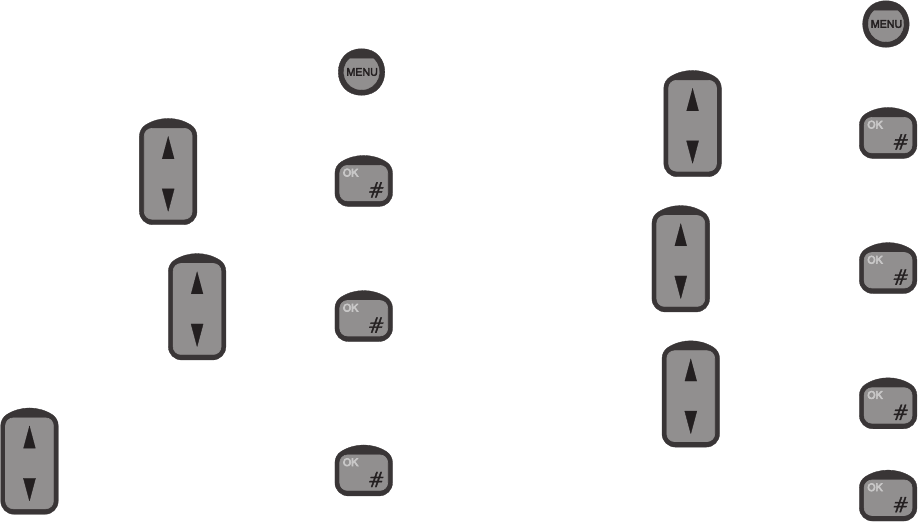
24
Software Version
Primarily for service purposes, it is possible to get information about
the version of the software for the following pieces of hardware in
your Iridium equipment:
•Transceiver: This software handles the configuration of your
Iridium equipment, audio routing, the information to be shown on the
displays, communication with your SIM card, etc.
•LBT: This software handles the communication between the
global Iridium network and your Iridium equipment.
•Handset: This software consists of low level drivers (for each
control unit) that control the dot matrix display, the key pad, the
status indicator lamps, and the microphone, earpiece and speaker.
To get information on these software modules, go through the
following steps:
1. To enter the function menu, press:
2. Find the item “System” using and press:
3. Find the item “SW version” using and press:
4. Choose the hardware whose software version you want informa-
tion on, using and press:
Resetting
Primarily for service and test purposes, it is possible to reset your
Iridium equipment to force it into a well-defined state. The following
different levels of resetting are available:
•Restart: No configuration information or user data (call log, user
list, phone book) are deleted. When this command is issued/chosen,
all control units are forced back to ready state regardless of their
current state.
•Factory reset:
NOTE!
ALL (!) configuration information AND
(!) user data (call log, user list, phone book) are deleted. When this
command is issued, your Iridium equipment returns to the state it
was in when leaving the factory.
To restart your system:
1. To enter the function menu, press:
2. Find the item “System” using and press:
3. Find the item “Reset” using and press:
4. Find the item “Restart” using and press:
5. To confirm that you want to restart the equipment, press:
0512
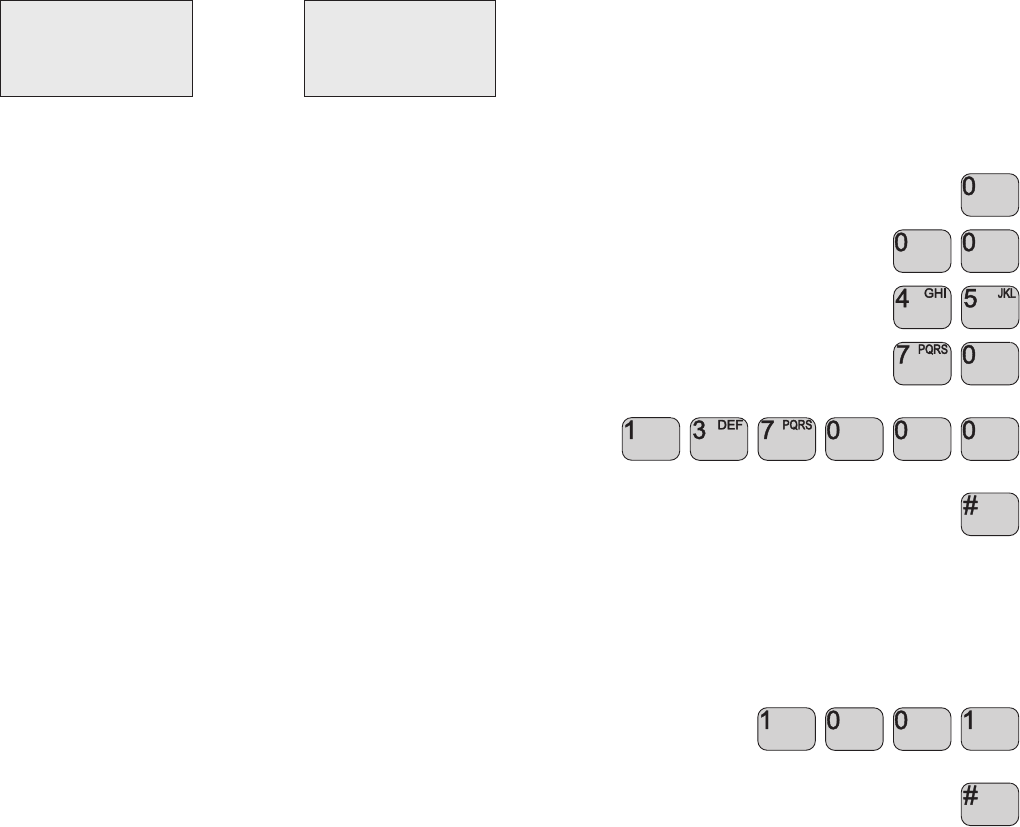
25
Auto Restart
The auto restart menu is used for debugging/maintenance only.
When enabled, auto restart will only be carried through when the
system is not in use.
Under the auto restart menu, the available items are:
Mode
The mode setting is used together with the timer as a condition for
when the system can reset. The mode settings - 10 minutes, 1
minute or 0 minute - will allow the system to reset after the timer
expires and when the condition that the handset has not been in use
for a period of 10 minutes,1 minute or 0 minute has been fulfilled.
Hardware Restart
Pressing the restart switch next to the SIM card holder will power
recycle the unit.
0512
Using an Analogue Telephone
You can connect an analogue telephone to your Iridium equipment.
Many of the system’s more advanced features, like the security lock
function, are however not accessible from an analogue telephone.
The accessible features are described in the Analogue Phone Menu.
Making a Manual Call
How to make an External Call
Entering a telephone number on an analogue telephone follows the
procedure shown with this example:
1. Pick up phone: dialling tone.
2. External call 0
3. Prefix for automatic call 0 0
4. Country code, e.g. 4 5
5. Area code, e.g. 7 0
6. Subscriber’s number, e.g. 1 3 7 0 0 0
7. To confirm you want to make the call,
press #
How to make an Internal Call
Entering a telephone number on an analogue telephone follows the
procedure shown with this example:
1. Pick up phone: dialling tone.
2. Internal number, e.g. 1001
3. To confirm you want to make the call,
press #
>Status
Enable
Disable
Timer
Enable
Disable
Timer
>Mode
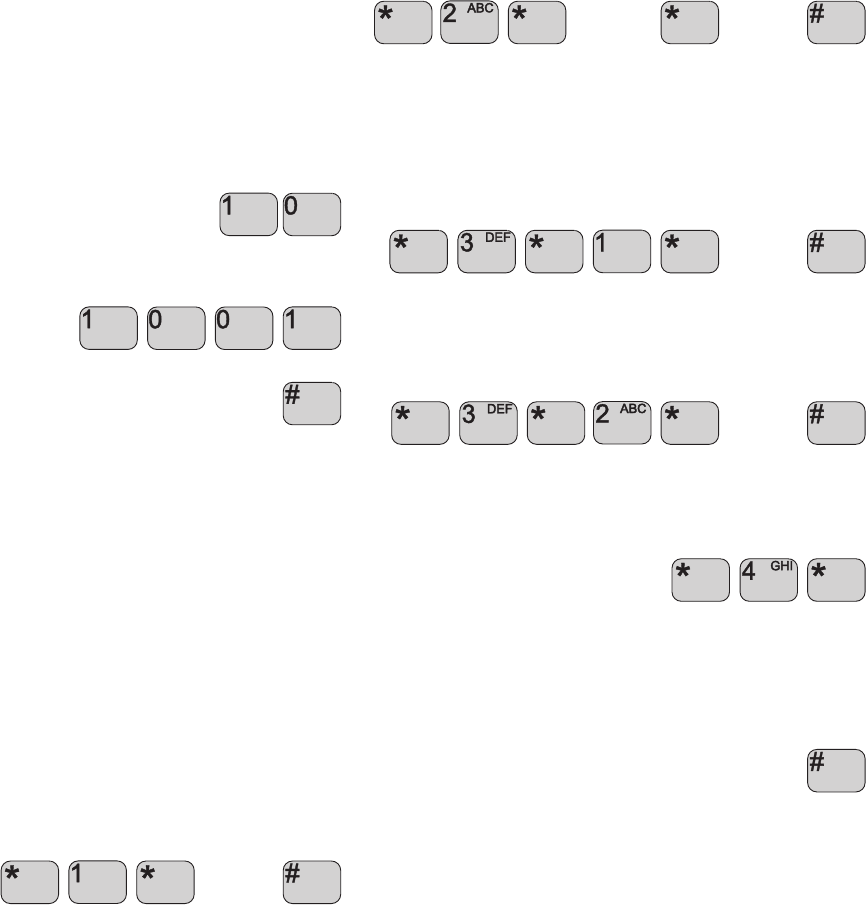
26
Factory setup of extension numbers are:
PSTN/PABX: 1000
CU1: 1001
CU 2: 1002
CU 3: 1003
CU 4: 1004
Up to four control units and a telephone/PABX can be connected to
the transceiver at the same time. Note that if connecting a PABX to
the transceiver, the PABX must function as a PSTN telephone.
To dial control unit 1 from a local telephone connected to your
Iridium equipment via a PABX, first pick up the phone, then:
1. Dial the number for the outgoing line connected to the trans-
ceiver, eg. 10
2. When you hear the dialling tone, dial the extension number of
control unit 1: 1001
3. To confirm you want to make the call,
press #
DTMF Tones - Limitations
When used for internal calls, control units do not generate DTMF
tones. Therefore the PABX cannot be set up for using DTMF tones
to access extension numbers.
Analogue Phone Menu
The phone menu is using tone notification for status indication.
When picking up the phone, tones will be pulsed if any user action is
required.
SIM Card Handling
Enter PIN code
If SIM PIN code is enabled the phone will repeat the following tone
pulses:
297Hz (300ms) – 317Hz (150ms) – 237Hz (300ms) – pause 1.5s
Enter the PIN code press * 1* PINCODE #
PINCODE
The phone is ready when dialling tone is heard.
Enter PUK code
If the SIM card is blocked the PUK code is needed to re-open the
card. The phone will repeat the following tone pulses:
1000Hz (300ms) – 1000Hz (300ms) – 1000Hz (300ms) – pause 1.5s
Enter the PIN code press: * 2 * PUKCODE * PINCODE #
PUKCODE PINCODE
The phone is ready when dialling tone is heard.
Enable PIN code
Pick up phone to enable PIN code.
When dialling tone is heard,
press: * 3 * 1 * PINCODE #
PINCODE
Disable PIN code
Pick up phone to disable PIN code.
When dialling tone is heard,
press: * 3 * 2 * PINCODE #
PINCODE
Signal Level
The signal level can be retrieved by:
Pick up phone: dialling tone,
press: * 4 *
The signal level will be indicated by a beep per level with an 800Hz
tone for 50ms per beep.
1 beep indicates no signal
6 beeps indicate full level
To return to dialling tone,
press: #
0512
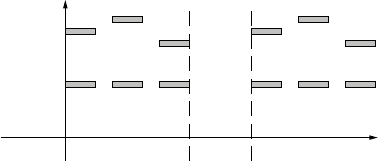
27
0512
Tone signalling on DTMF menu
Tone
Time
39628
Enter PUK Code
Enter PIN Code
Billing
When a mobile originated call is initiated from the RJ11 port (PSTN/
PABX) and the call is connected to the remote user, the system
sends the billing tone to the PSTN/PABX at the RJ11 port. The tone
lasts for 500ms. Some PABX can catch this tone and start billing the
user at the PABX for the call.
Refer to “Handset Advanced Operation” for setup instructions.
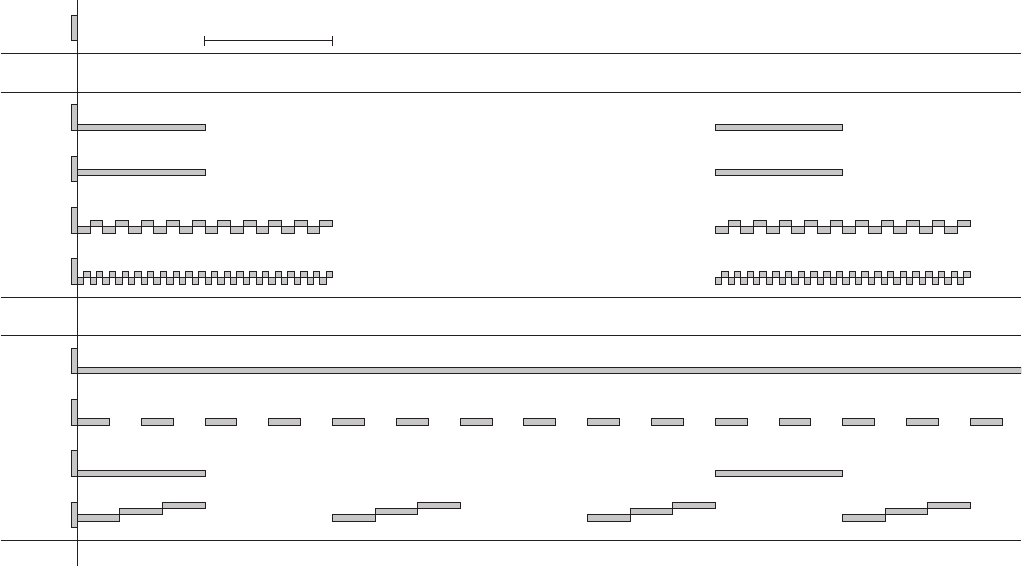
28
0512
1800 Hz
1440 Hz
900 Hz
450 Hz 1 sec.
DEEP
HIGH
BUSY
READY
CONNECTION
WAITING FOR
NON
EXISTING
RECEIVING CALLS
TRANSMITTING CALLS
36329B
ALTERNATING
SLOWLY
ALTERNATING
FAST
Appendix A
Tone Signalling
The system will give you information on its status as well as
instructions by means of tone signalling. This is done on four
different frequencies: 450, 900, 1440 and 1800 Hz. Appendix A
illustrates what the various tone signalling sounds like.
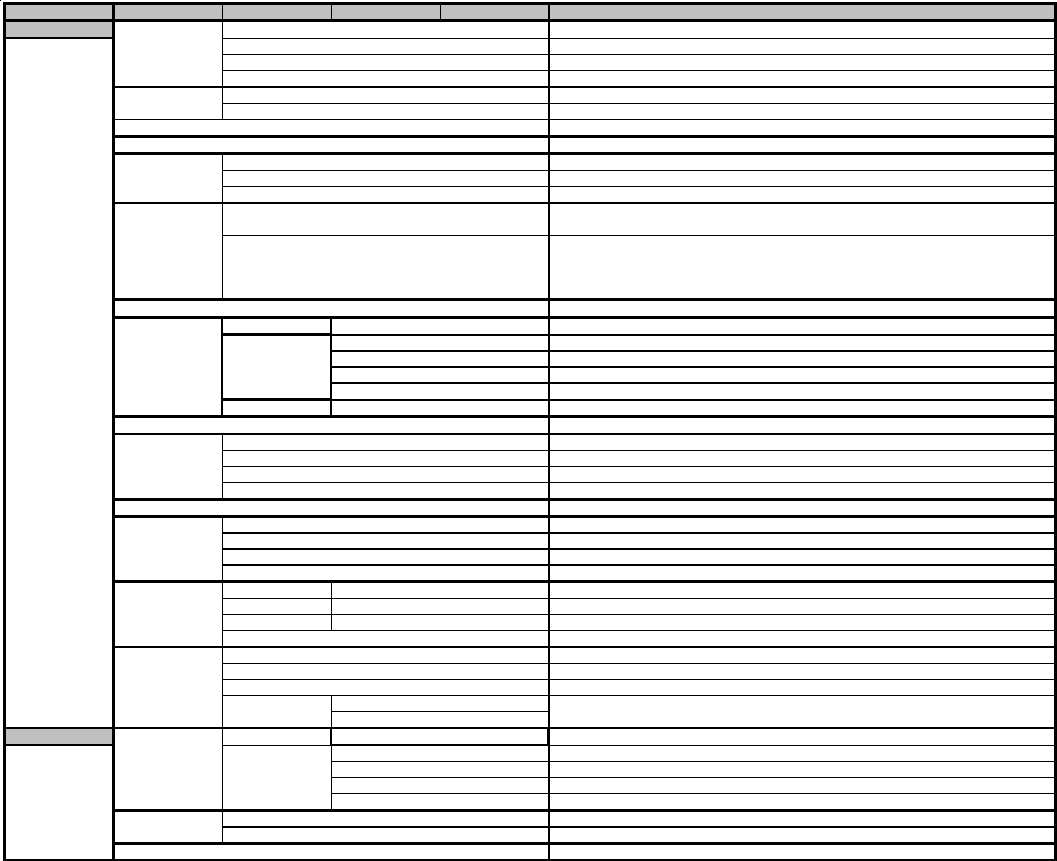
29
M enu 1st submenu 2nd submenu 3nd submenu 4nd submenu Action
Setup Ringing tone Deep Sets ringing tone to deep (see Appendix A )
High Sets ringing tone to high (see Appendix A )
Slow alt. Sets the ringing tone to alternating slowly (see A ppendix A)
Fast alt. Sets the ringing tone to alternating fast (see Appendix A )
Ring test External Generate external ringing tone in order to test the setting o f this sound
Internal Generate internal ringing tone in order to test the setting of this sound
Ring vol. (*) Sets the volume of the ringing tone
Speaker vol. (*) Sets the speaker volume
Key beep (*) Enable Turns on the key beep function: When a key is pressed, a beep is heard
Disable Turns off the key beep functio n: When a key is pressed, no beep is heard
Volume Sets the volume of the beep heard when a key is pressed
Lock Enable Requires users to log in. When selecting this functio n, the user is prompted to
log in
Disable Does no t require users to log in. This function can only be selected by users
with certain prio rities. When selecting the function, the user is asked to state
a default user priority level that decides what all users will be allo wed to do.
This default priority level canno t be higher than that o f the user disabling the lo ck
Password Sets the current user’s password
Users Userlist + Add Browses the user list, and adds new users, entering names and passwo rds
Userlist + Edit Name Browses the user list, and edits user names
Password Browses the user list, and edits user passwords
Priority Browses the user list, and edits user priorities
Clear account Browses the user list, and clears user account reco rds
Userlist + Del. Browses the user list, and deletes users from the list
Extension (*) Selects the extension number of the current handset
Transfer (*) Enable Enables the auto transfer function
Disable Disables the auto transfer function
Extension Selects the extensio n number(s) to which calls are to be transferred
Delay Time Selects the delay time before a call is transferred
GPS Shows the current po sition
Display (*) Time/date Displays the time and date when the handset is ready
Time Displays the time (hour and minute) when the handset is ready
Positio n Displays the position when the handset is ready
State only Displays only the state o f the system when the handset is ready
Light Dimmer On Turns the display backlight on
Off Turns the display backlight o ff
Level Adjusts the level of the display backlight
Contrast Adjusts the display contrast
Billing Status Shows the status of billing tone
Enable Enables the billing tone
Disable Disables the billing tone
Frequence 12 kHz Selects the tone frequency
16 k H z
Call log Global Outgo ing Userlist Browses the lo g of all outgoing calls
Acco unt Users Browses the user list, and sho ws the accounts of selected users
Phone Sho ws the account of the P STN pho ne
Unkno wn Shows the acco unts of unknown users
Del. Users Shows the accounts of deleted users
Private Outgoing Browses the log o f the current user’s calls
Acco unt Views the current user’s account
Last call View the duration of the last call
Appendix B
Function Menu Overview
0512
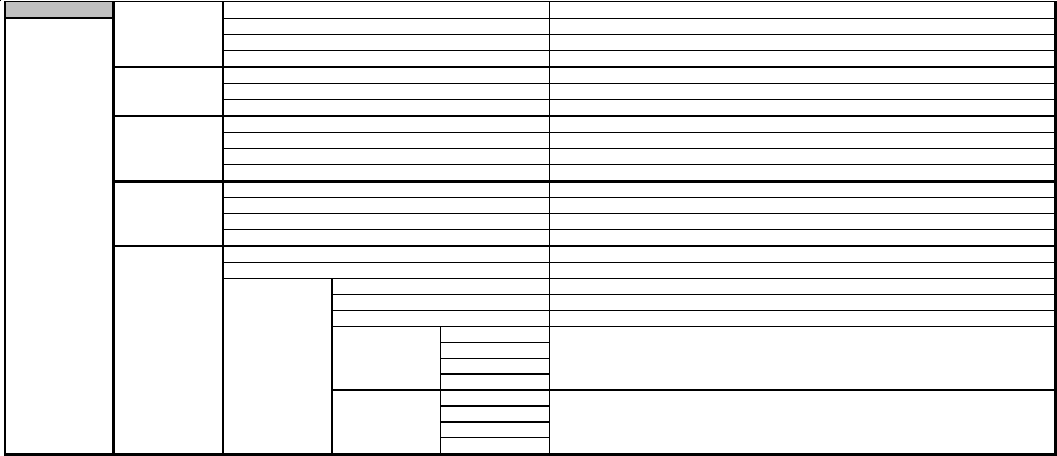
30
System Time/date Status Shows the time and date
Set Sets the time and date
Sys.update Sets the system to update the time and date
GPS update Sets the GPS to update the time and date
SW version Transceiver Displays the software version number of the transceiver
LBT Displays the software version number of the LB T
Ctrl unit Displays the software version number of the handset
Call answer Status Shows the status of Call Answer, i.e. who is set to receive incoming calls
One CU Incoming calls go to a specific control unit
PSTN Incoming calls go to the PSTN phone
All Incoming calls go to all control units and the PSTN phone
SIM Card PIN enable Enable PIN code
PIN disable Disable PIN code
Change PIN Change PIN code
PUK code Enter PUK code
Reset Restart Restarts the system (works like switching the po wer off and o n again)
Factory res Restarts the system and relo ads all factory settings
Auto Reset Status Shows the status of the current setting
Disable Will disable the auto-reset function
Enable Will enable the auto-reset functio n
Timer 24 hour Sets the time between auto resets
12 h o u r
6 hour
1 hour
M ode Ready Sets the time for how long the control handset must have been left unused before auto reset
10 m i n
1 m i n
0 min
0512

Thrane & Thrane A/S • info@thrane.com • www.thrane.com